
Find and Fix – Diagnosing and Fixing the Running Issue on the 1974 MGB GT V8
The workshop at Bridge Classic Cars restoration HQ here in Suffolk have been looking into the running issue on the 1974 MG B GT V8


The workshop at Bridge Classic Cars restoration HQ here in Suffolk have been looking into the running issue on the 1974 MG B GT V8

The Bridge Classic Cars restoration workshop has been busy removing the engine and gearbox from the 1933 Austin 7 to inspect and get to the

The workshop team at Bridge Classic Cars have been working on getting through the list of jobs on the 1968 MGC Roadster. The latest work
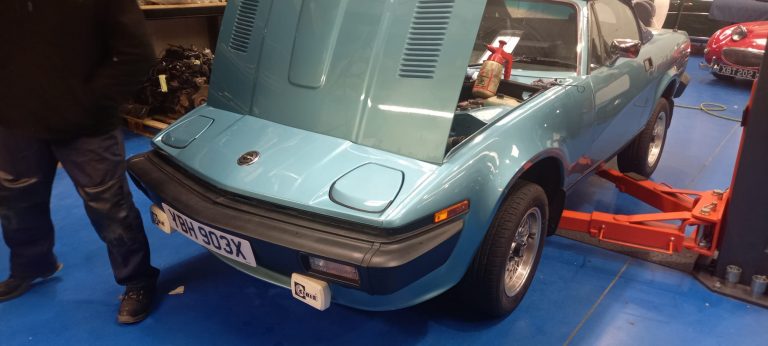
The team at Bridge Classic Cars have finished up the service on the 1981 Triumph TR7 V8 at our restoration workshops in Suffolk. The car

The trim team at Bridge Classic Cars have been working on modifying and creating parts for the dash of the 1970 Bristol 411 for a

The 1952 MG YB in the Bridge Classic Cars workshop has come into our restoration team for a brake service. Rob carefully took apart the
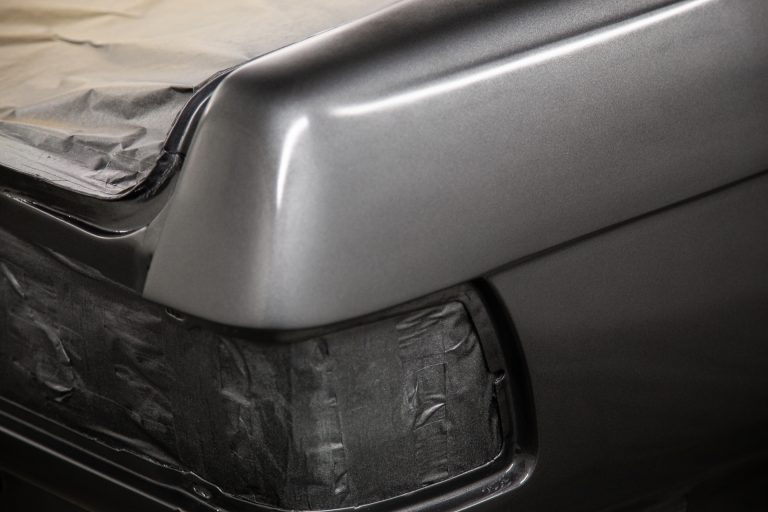
The 1987 Mercedes 500SL has been moved from the preparation area at Bridge Classic Cars into the paint shop and then, into our in-house paint

The 1970 Bristol 411, which is having a LHD conversion carried out, has had a brand new glovebox insert made by our incredible trim shop.
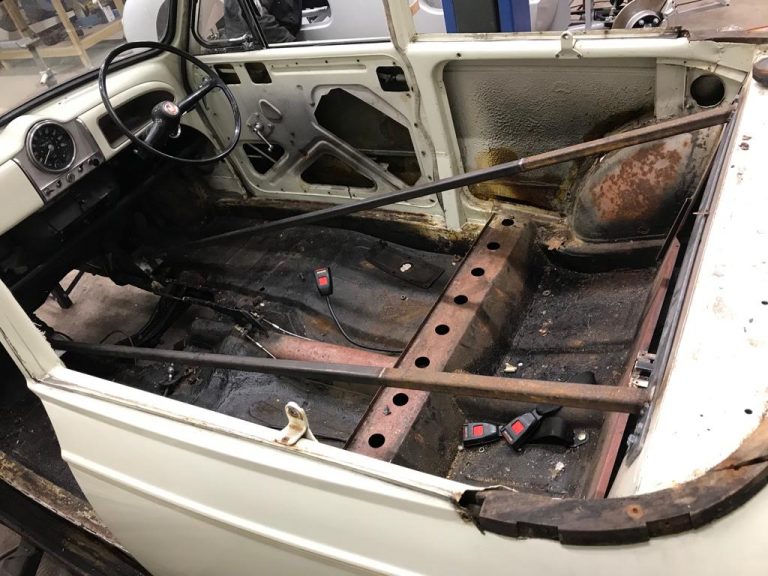
The bodyshell of the 1969 Morris Minor Convertible has been braced by the Bridge Classic Cars fabrication team in preparation of the repairs to begin.
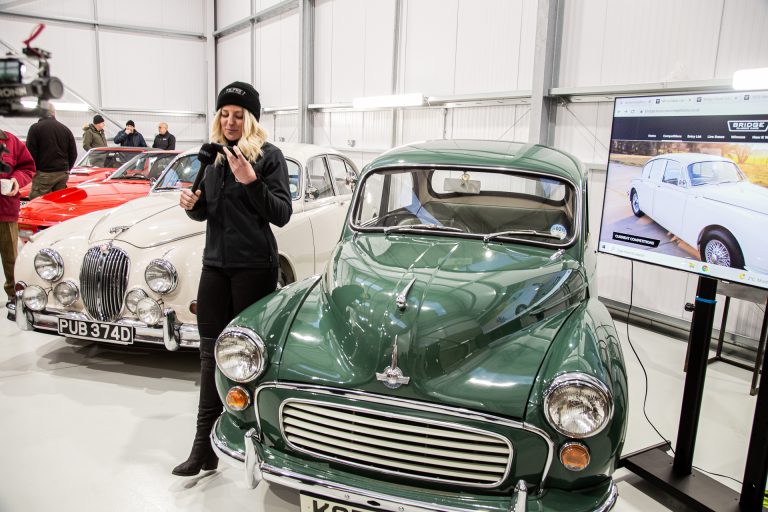
Last night, the 31st March 2022, the Bridge Classic Cars Competitions team welcomed our largest ever studio audience to find out who the lucky winners
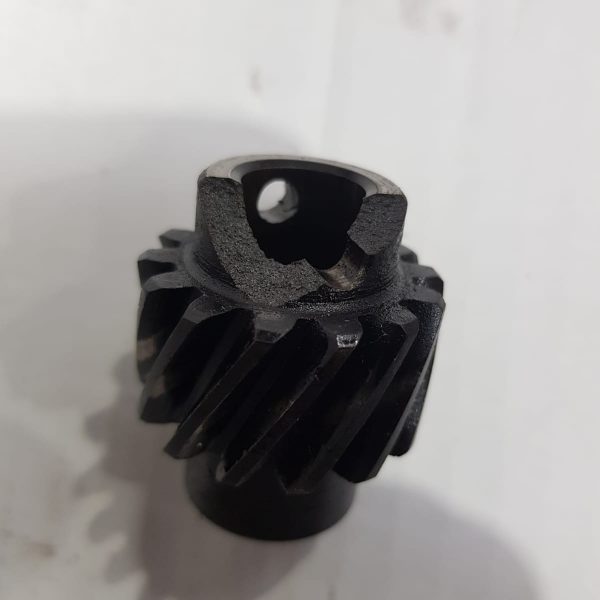

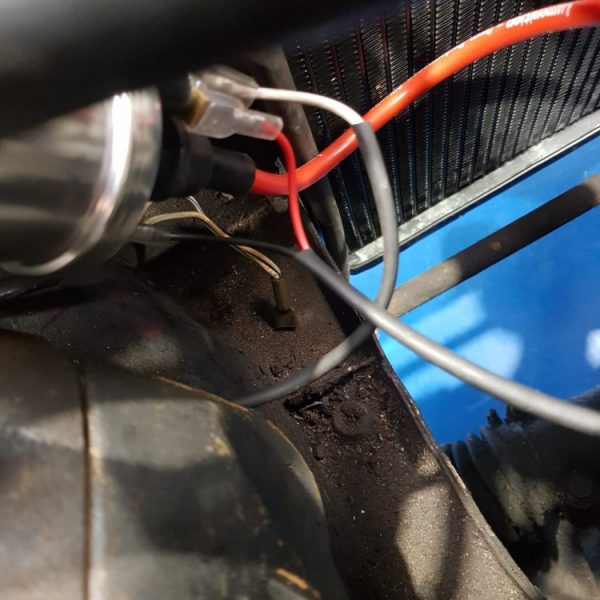
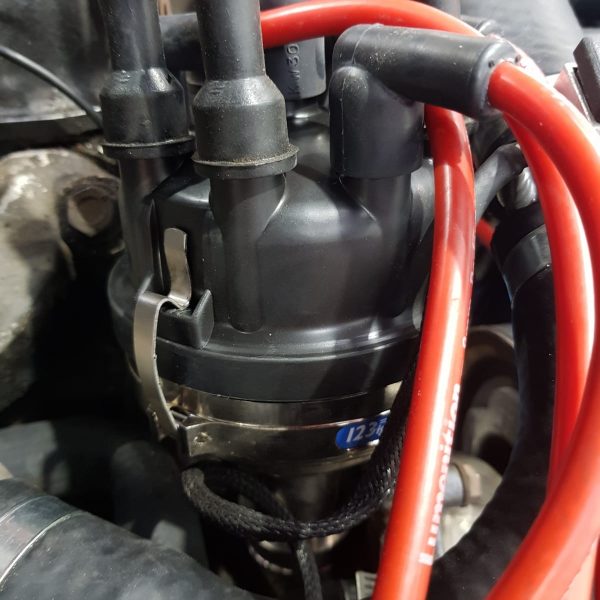
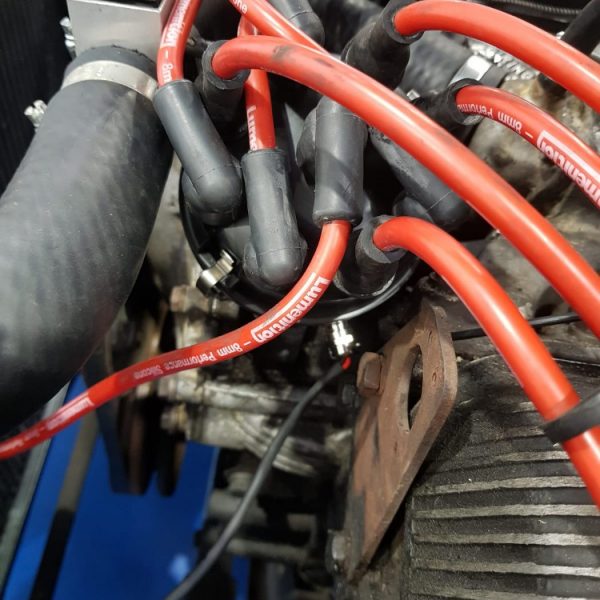


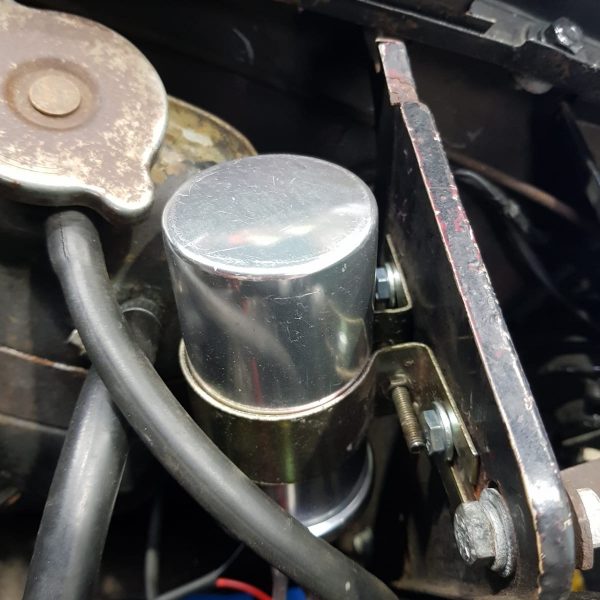
The workshop at Bridge Classic Cars restoration HQ here in Suffolk have been looking into the running issue on the 1974 MG B GT V8 which was noted by the owner.
The restoration team began by looking at the ignition system and found several key parts of the system were not working as they should. Upon inspecting the distributor had broken off part of its drive gear, so this item had to be replaced in order to consistently and uniformly send the signal to the spark plugs. Along with that, a fault was found with the coil and the condenser as well as some of the wiring which was causing the car to stop firing suddenly.
All of these were replaced with high-quality replacement parts and fitted by our restoration team to the classic MGB.
After fitting, the technicians tested the car to make sure everything worked exactly as it should before giving the car the all clear.
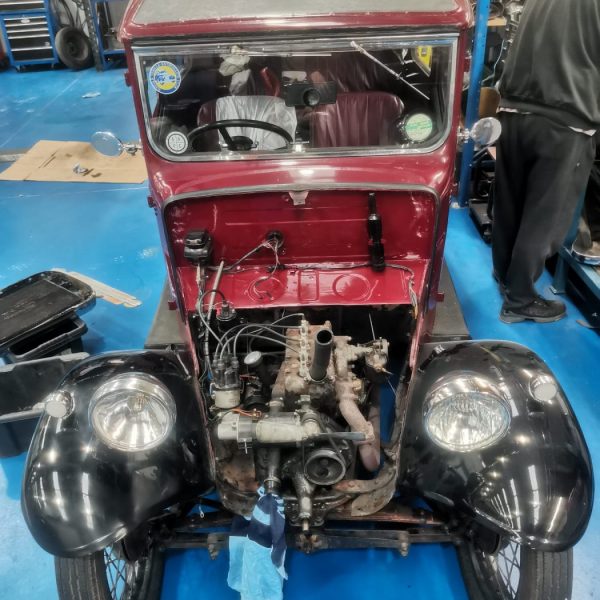
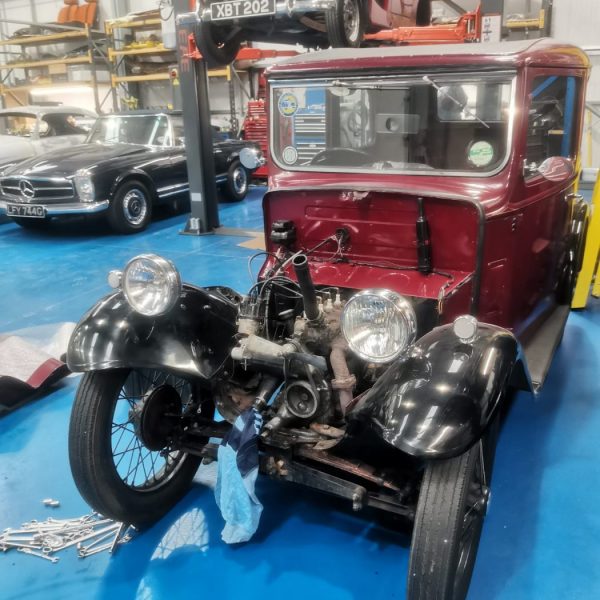


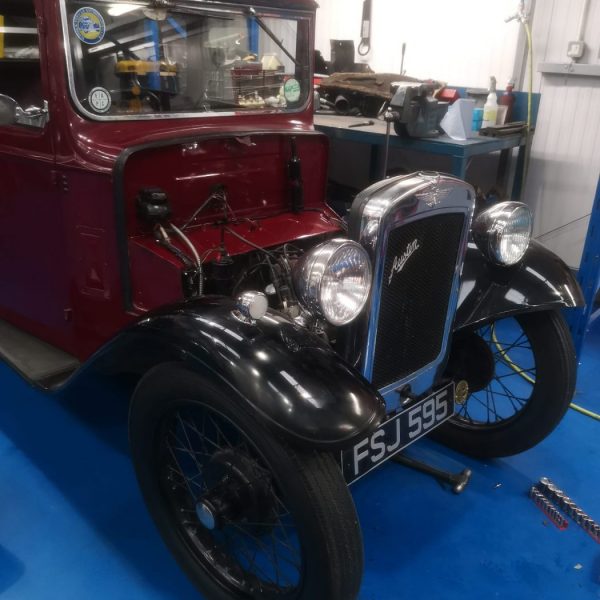
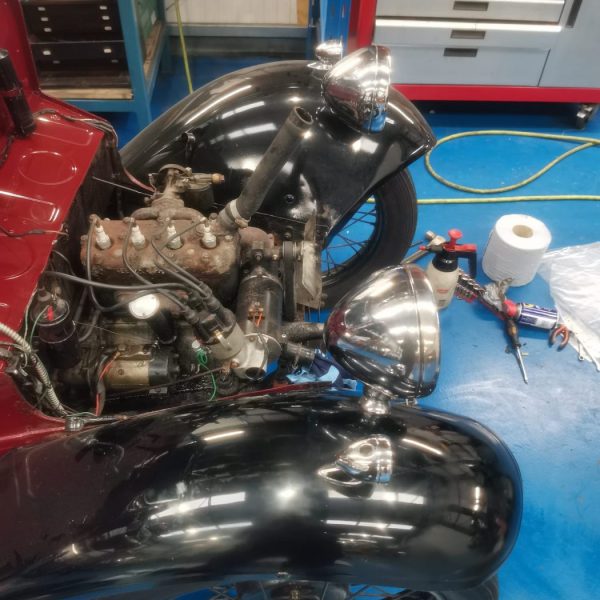
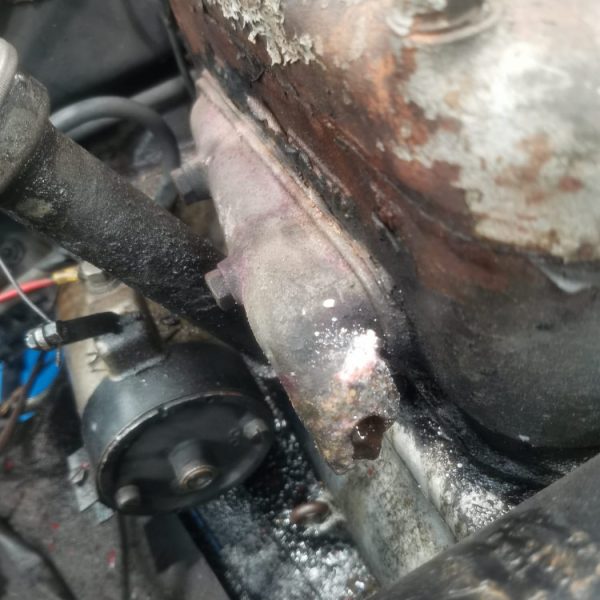
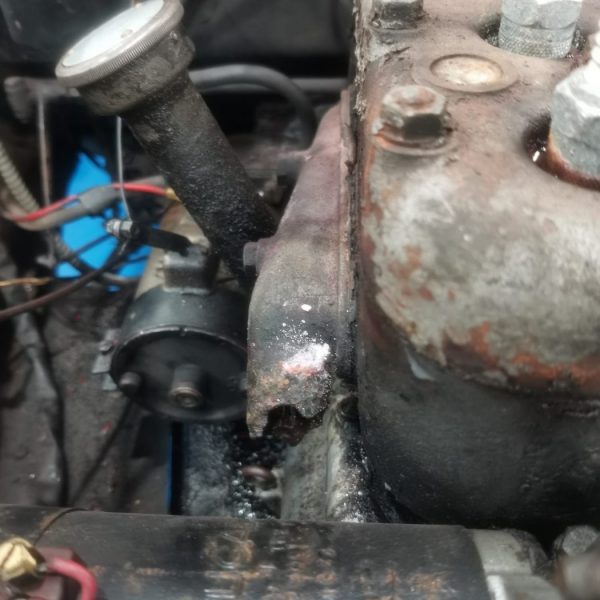
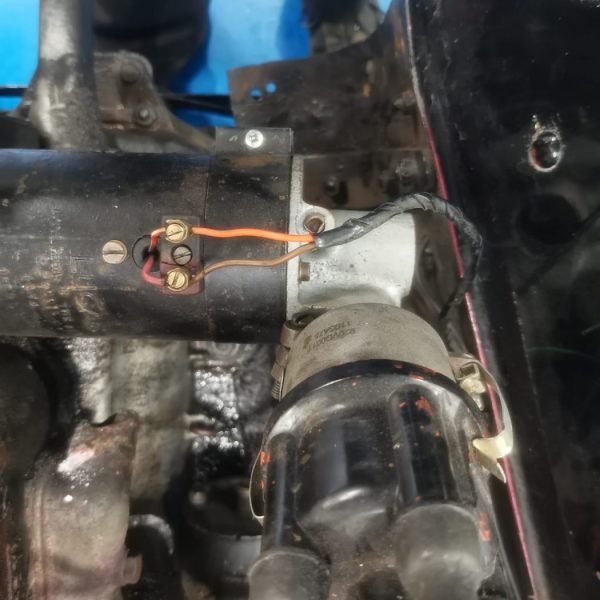

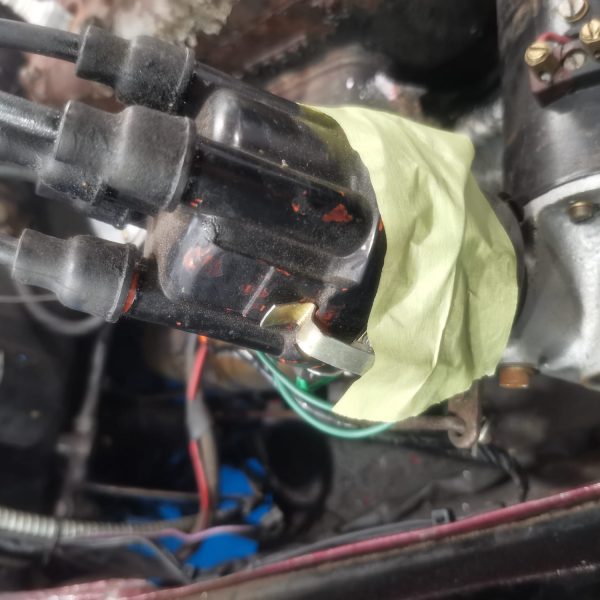

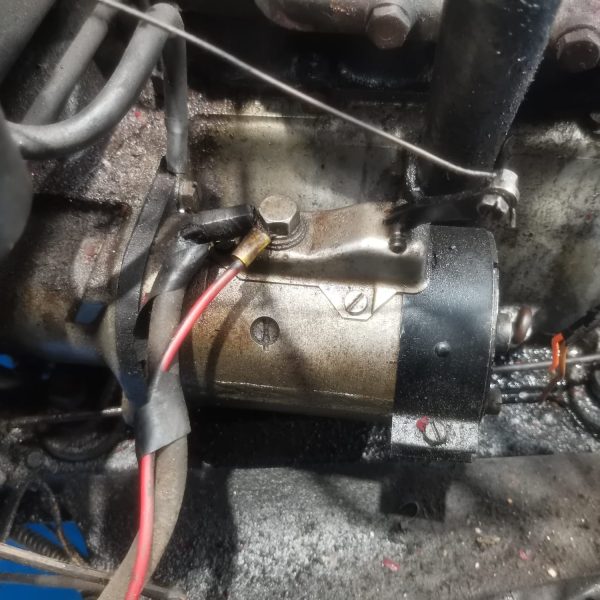
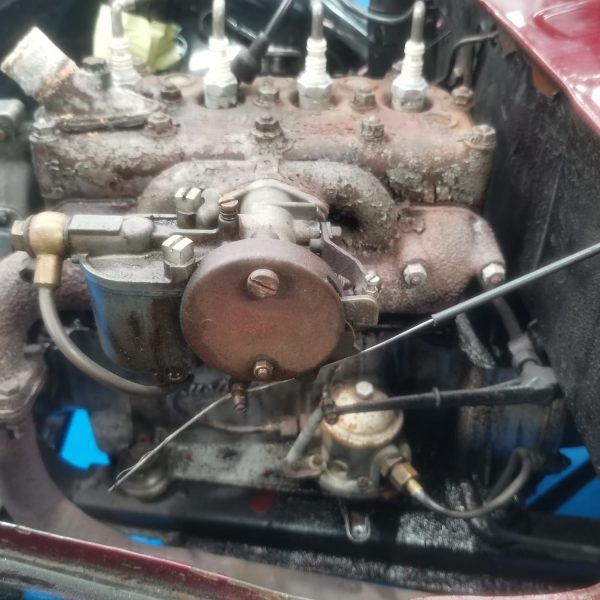
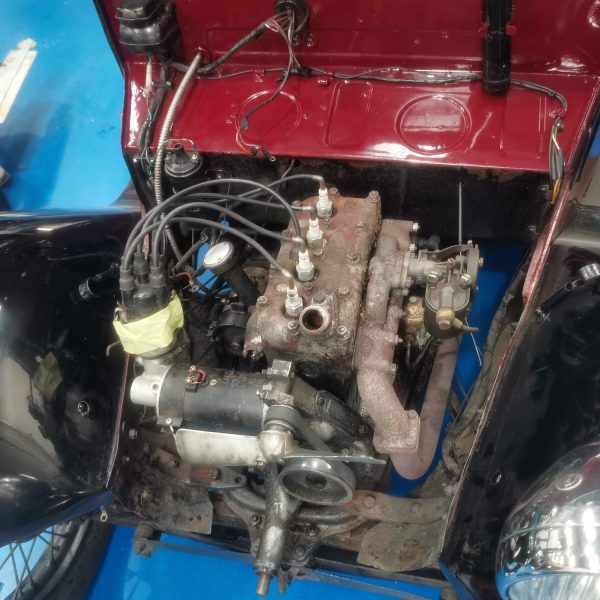
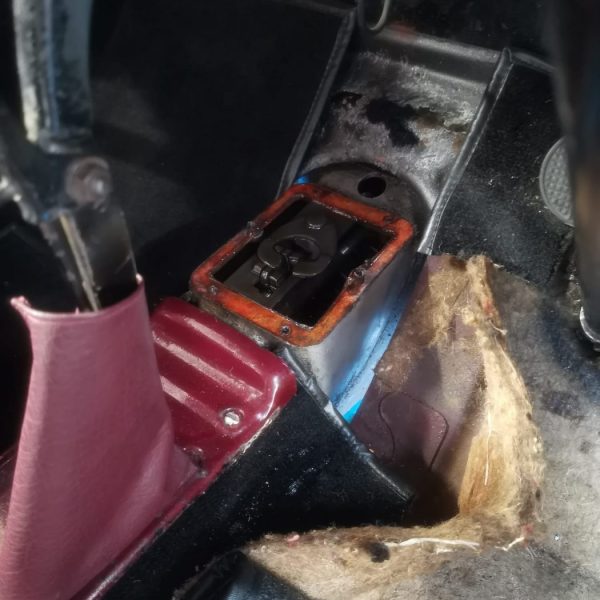
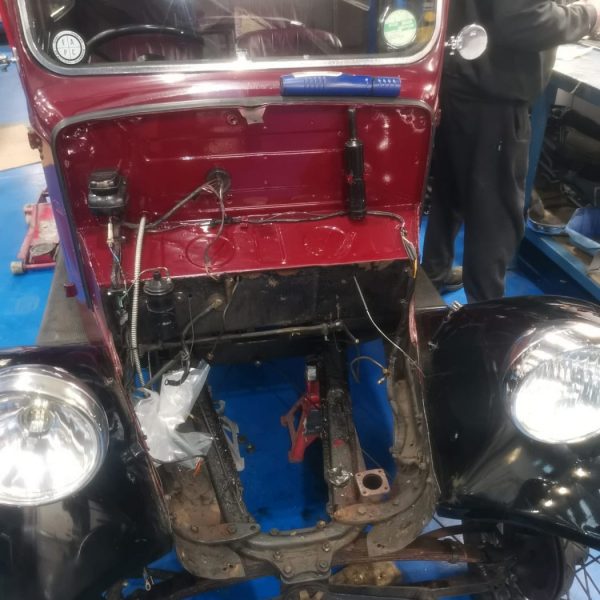
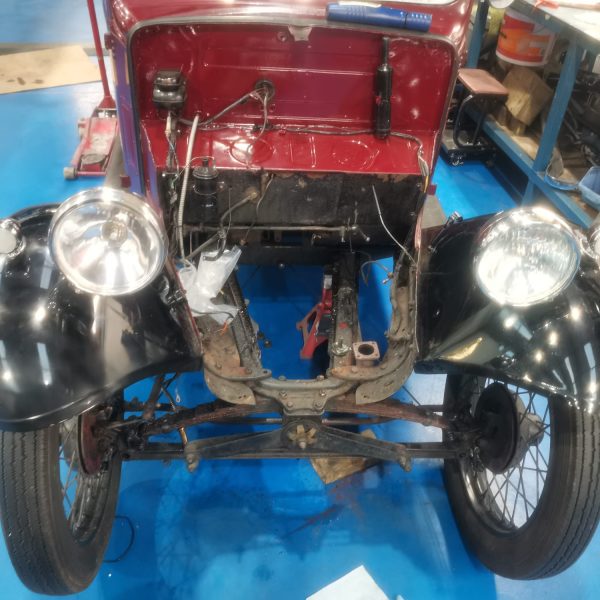
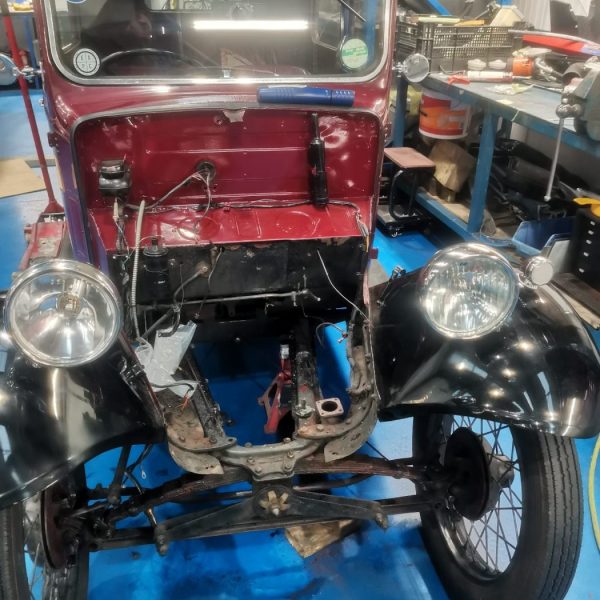

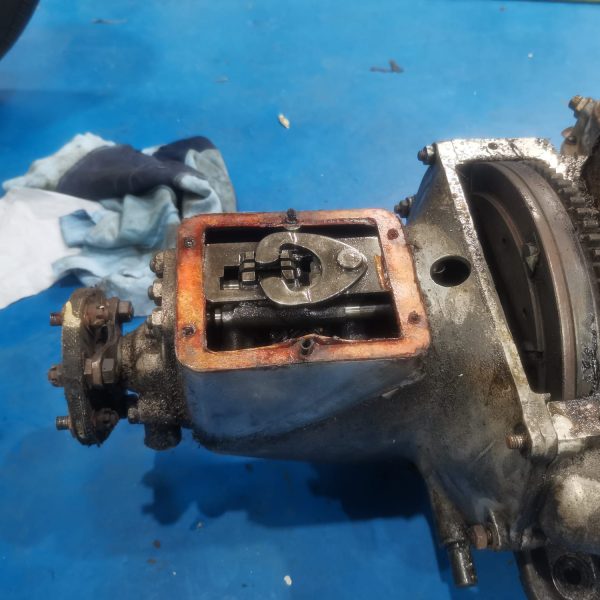
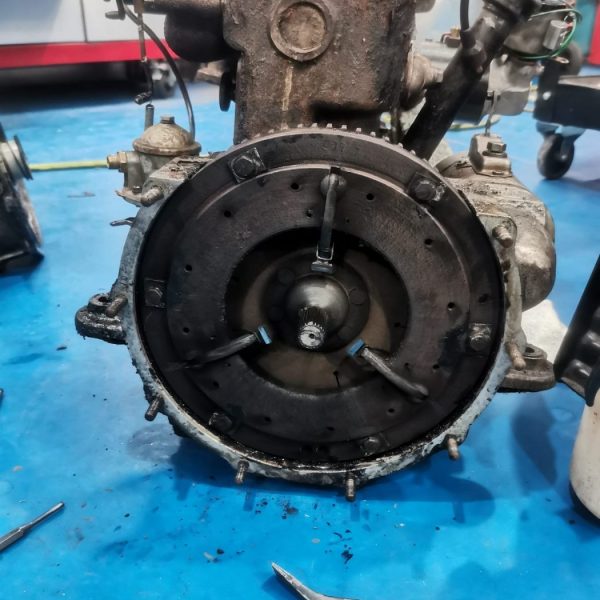
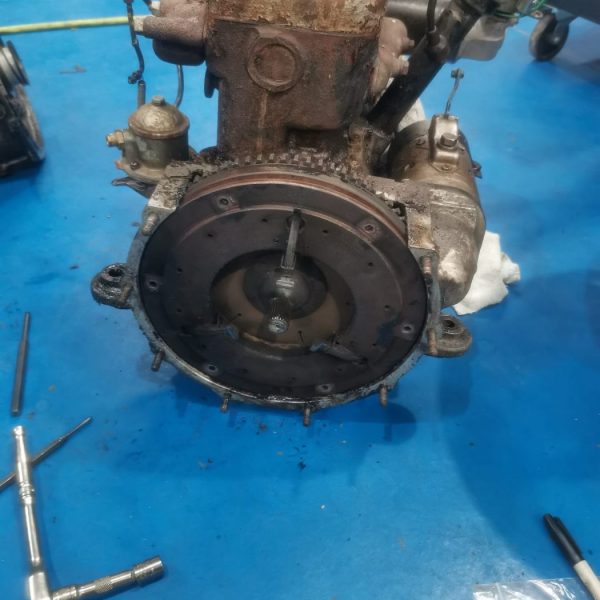
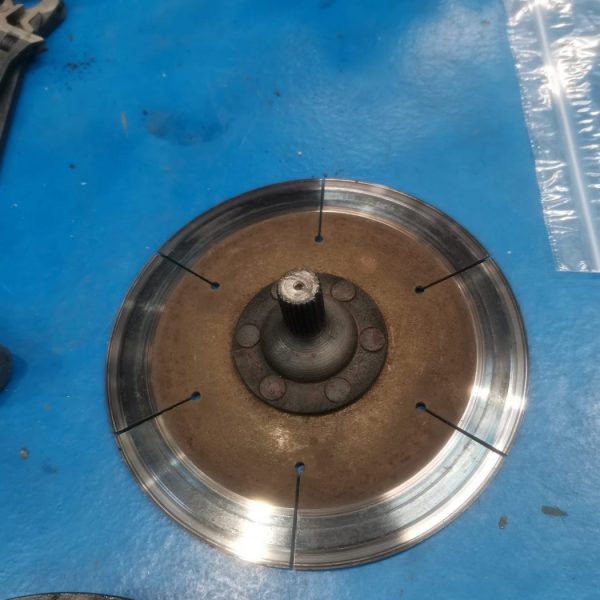

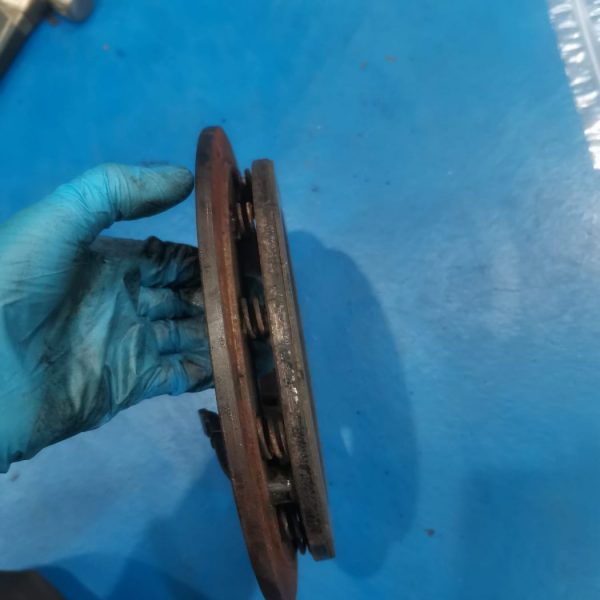
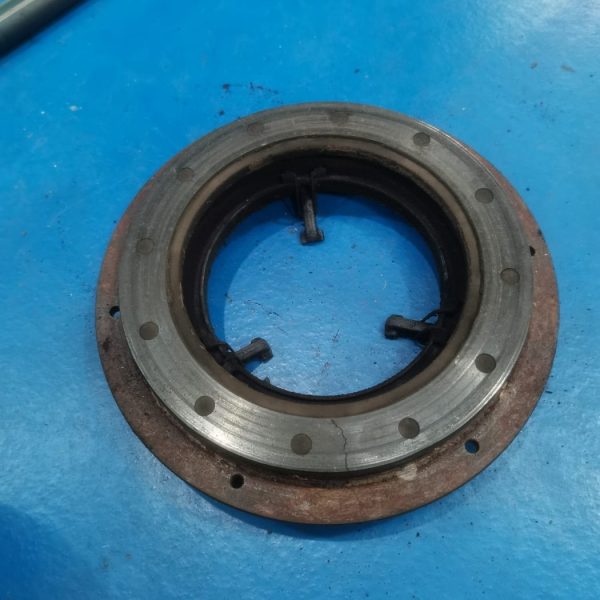
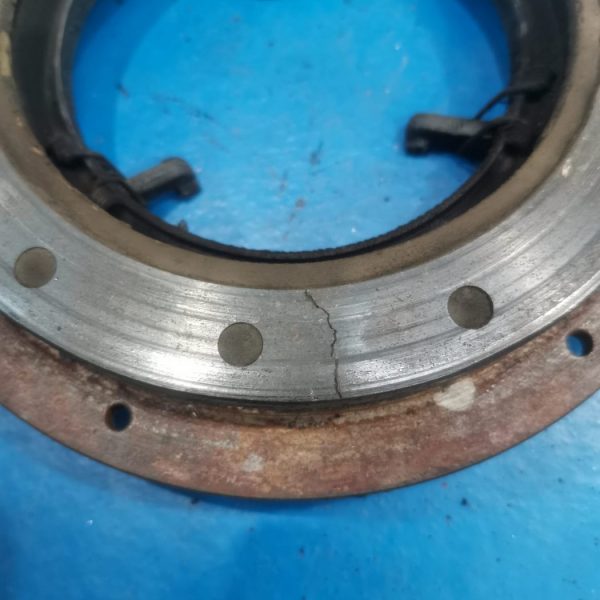


The Bridge Classic Cars restoration workshop has been busy removing the engine and gearbox from the 1933 Austin 7 to inspect and get to the bottom of some issues for its owner.
After carefully disconnecting all of the various wires, cables and hoses from the classic Austin, the team could begin the process of liberating the tiny 4-cylinder from the front of the car. Once out of the car, the gearbox and engine could be separated in order to fully inspect the clutch and flywheel.
The clutch had begun to actually crack in the material which will need to be replaced. This confirms the thoughts that the clutch had indeed burnt out, this can really only be confirmed with a visual inspection of the clutch and flywheel/ring-gear themselves.
These will be sent away to a trusted specialist to be rectified and then, once back can be reinstalled back into the car.

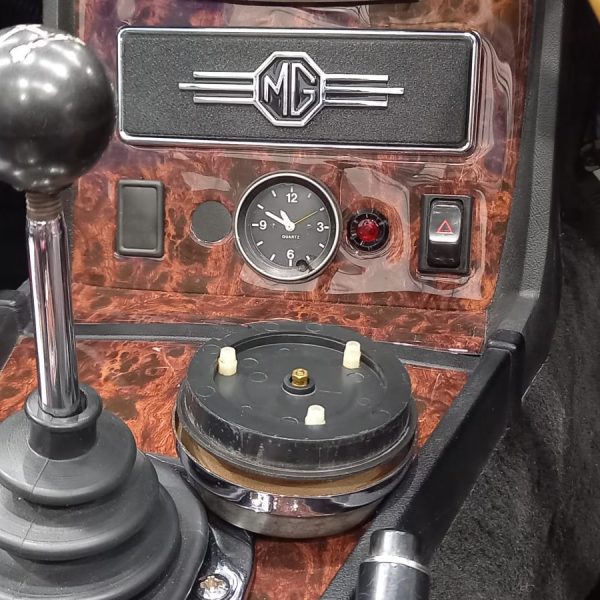

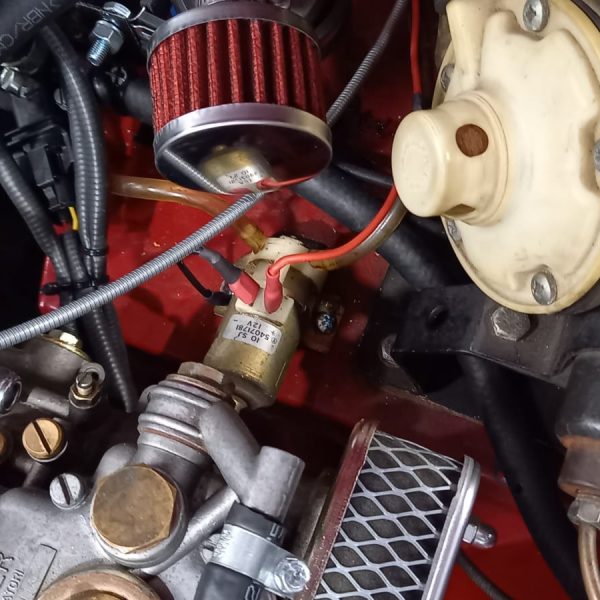
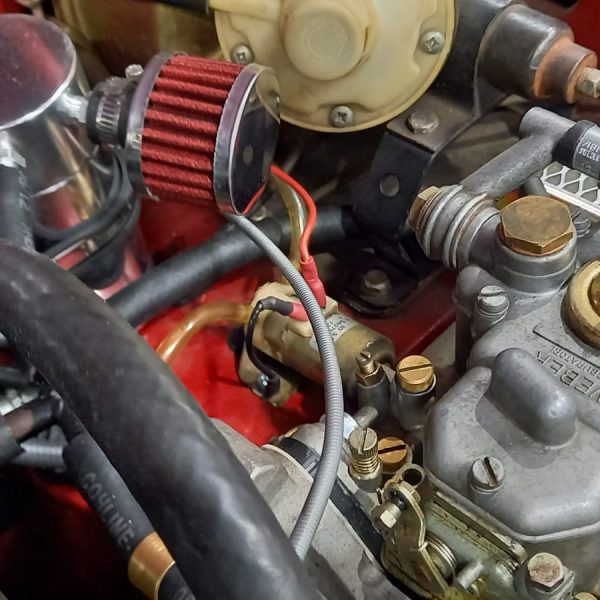

The workshop team at Bridge Classic Cars have been working on getting through the list of jobs on the 1968 MGC Roadster.
The latest work to be completed on the car is the new addition of hazard lights fitted into the lower centre console of the classic convertible before specifically made blanks were installed in order to cover up any previous holes.
Along with that, Jon has run the wiring to change the switch for the washer pump from the original stork style to the newest switch style and fitted a new washer pump along with it.
At the back of the car, the team have installed a new fuel pump onto the car to sort out some fueling and idling issues with the car. Also, this has been installed as a matter of course to help with the longevity and ease of use of the car.

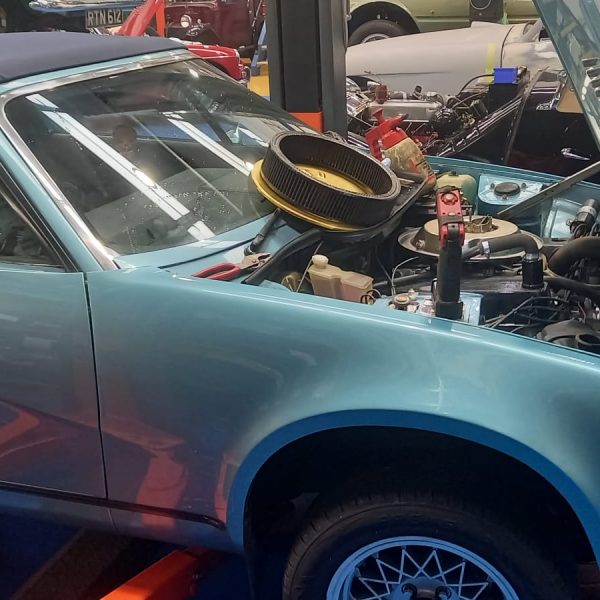

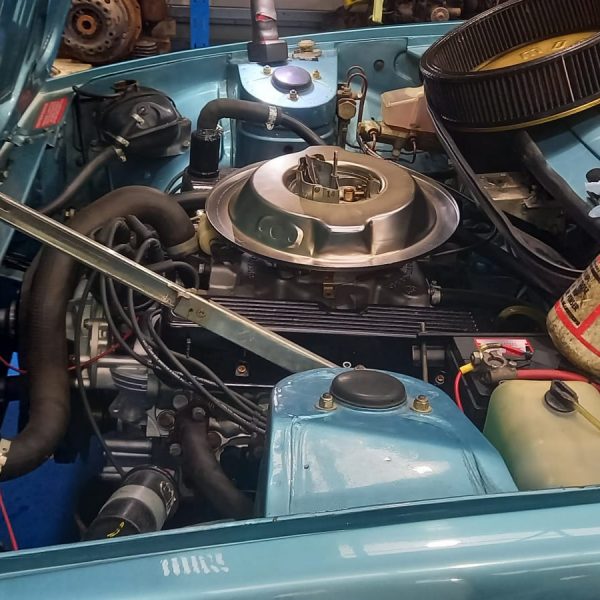
The team at Bridge Classic Cars have finished up the service on the 1981 Triumph TR7 V8 at our restoration workshops in Suffolk.
The car will also be given a mechanical check over by our restoration technicians who will report back any of their findings.
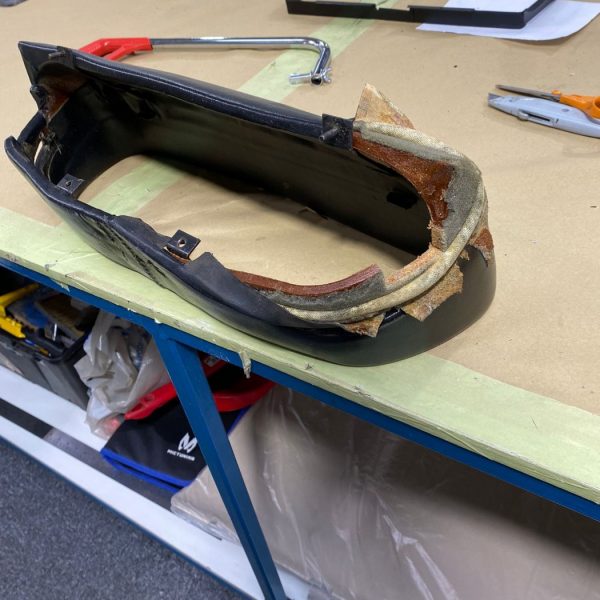
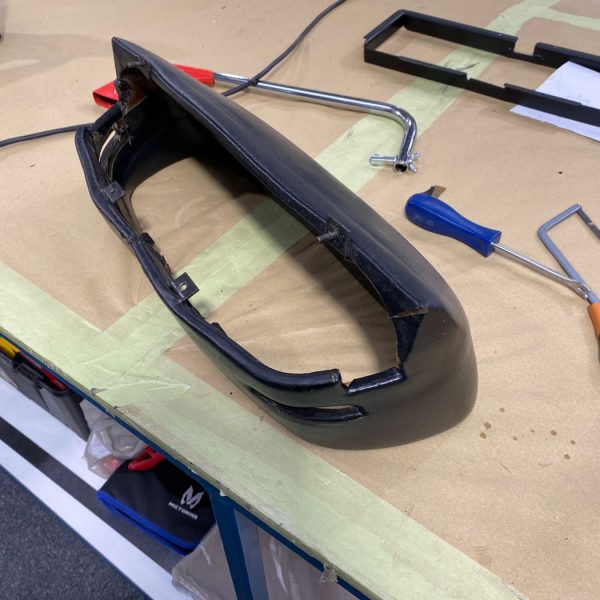
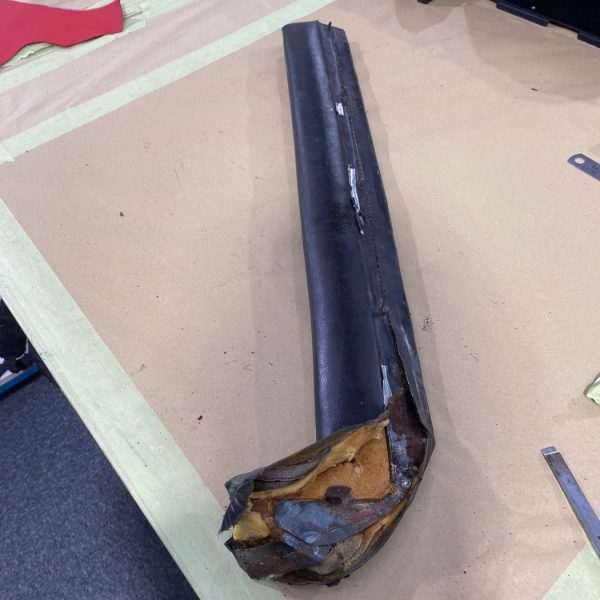


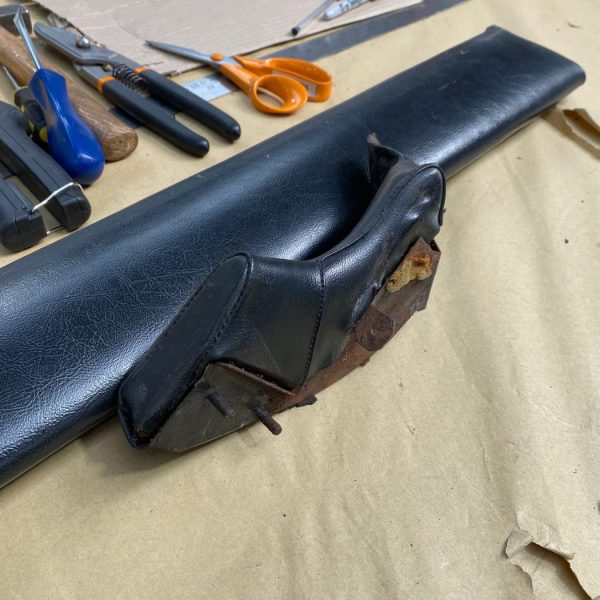

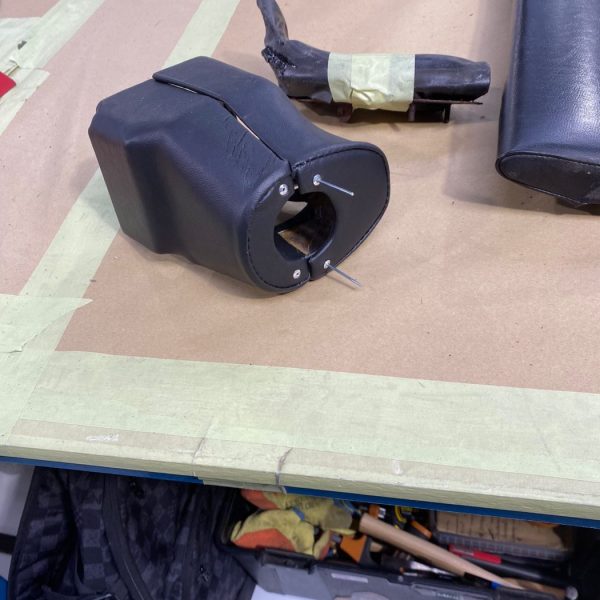
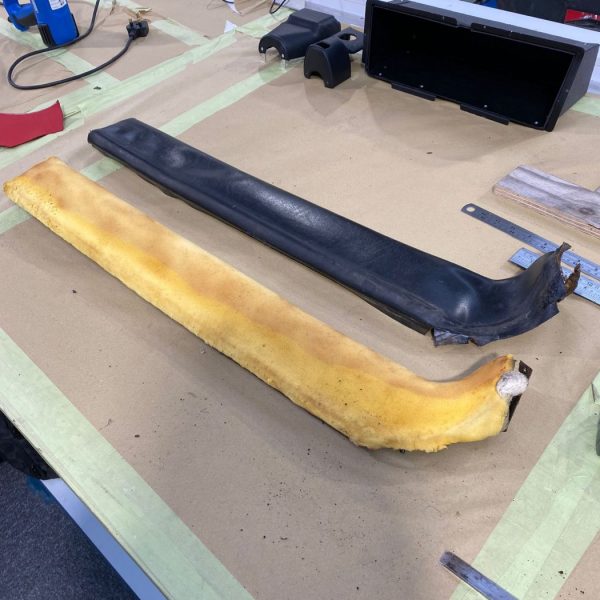

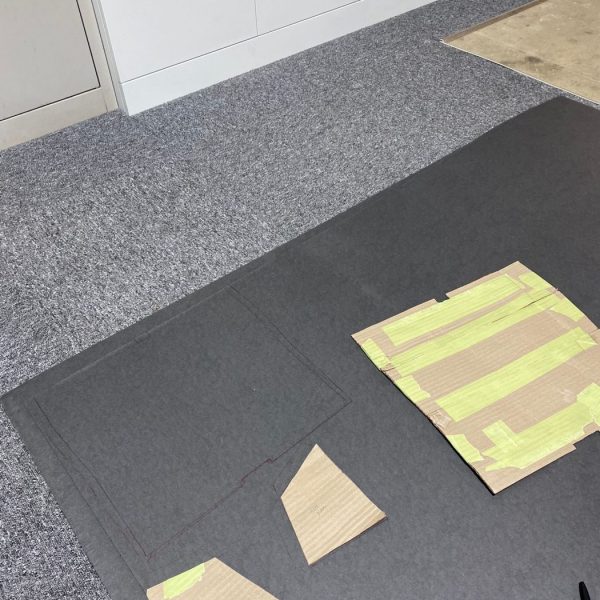
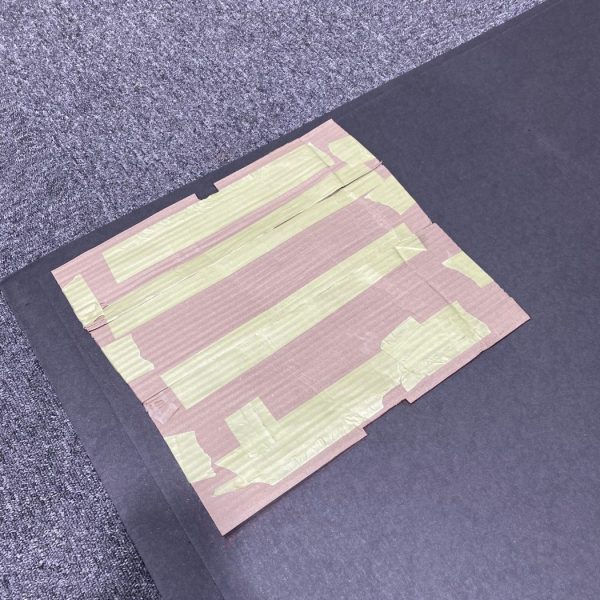

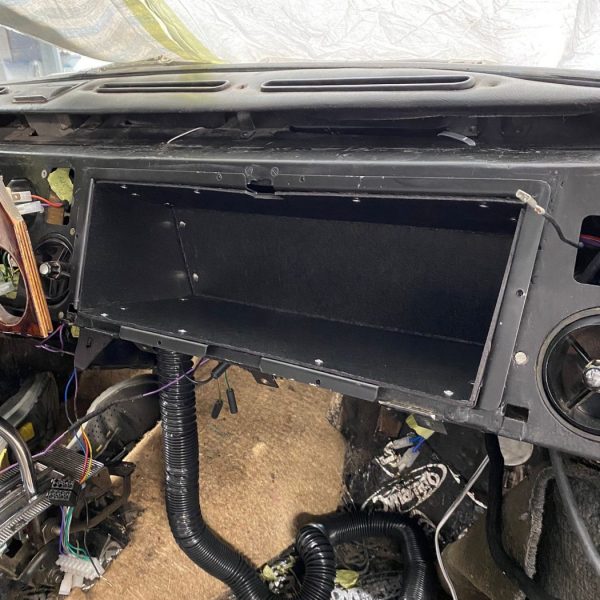



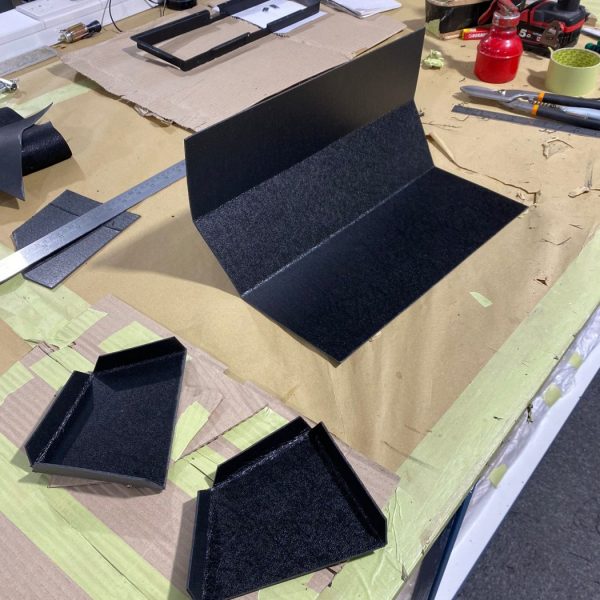
The trim team at Bridge Classic Cars have been working on modifying and creating parts for the dash of the 1970 Bristol 411 for a left-hand drive conversion.
The dash cover and panel have been modified and stripped in order to work with the new placement of the ignition barrel and steering column. The ignition barrel also needed several small brackets made to reattach it to the column after the change over from right to left which after this was completed, meaning the whole piece could be recovered.
The team also handmade a new glovebox insert to work around the different bracketry and supports which now lay behind it.
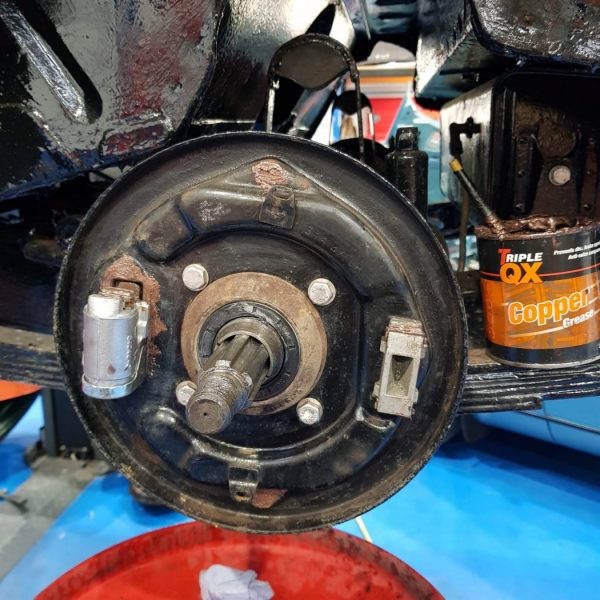
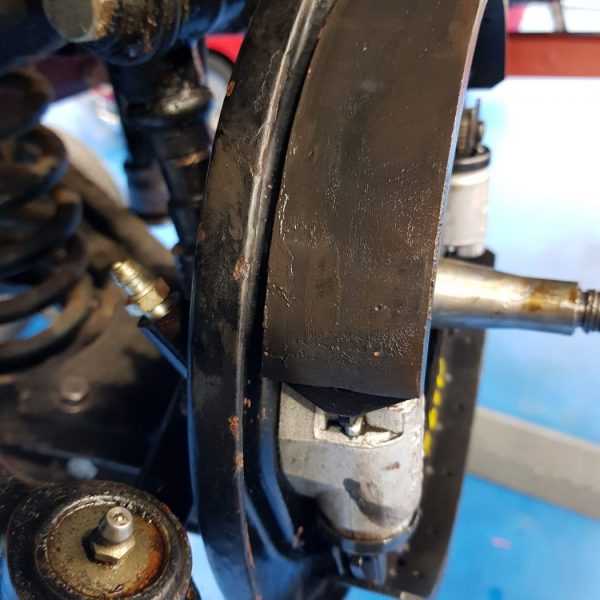
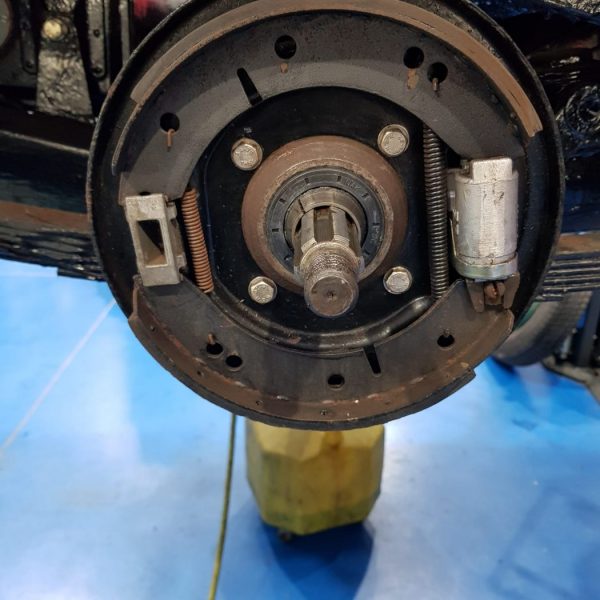
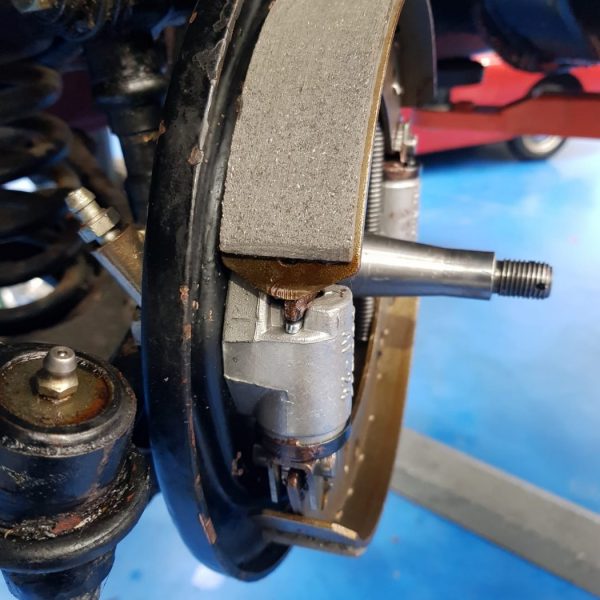
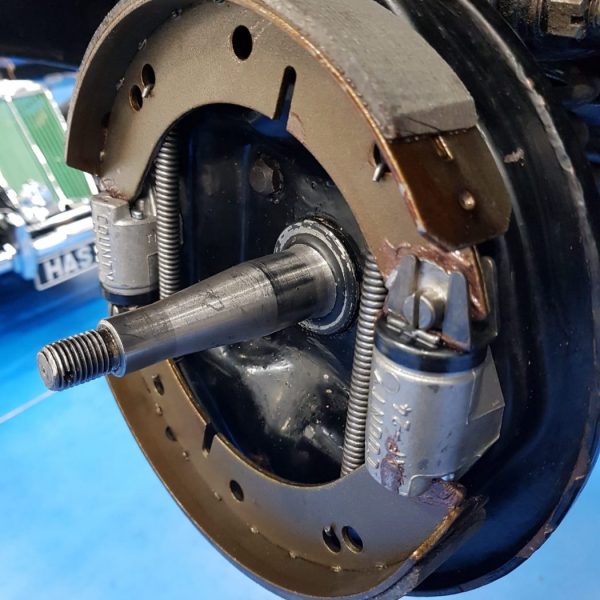

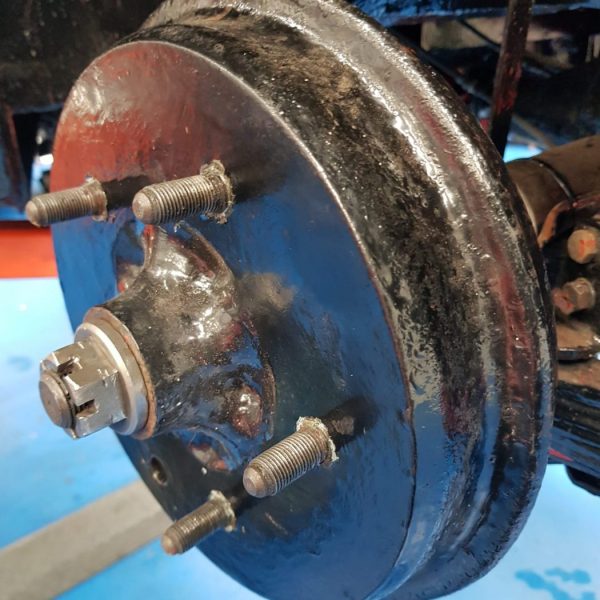

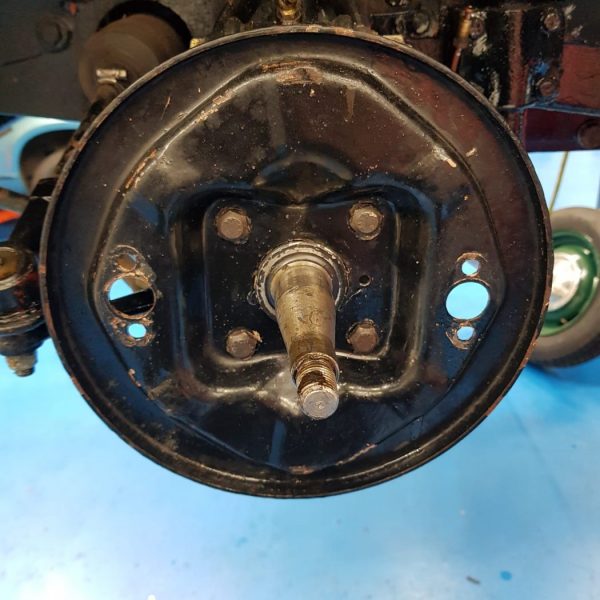
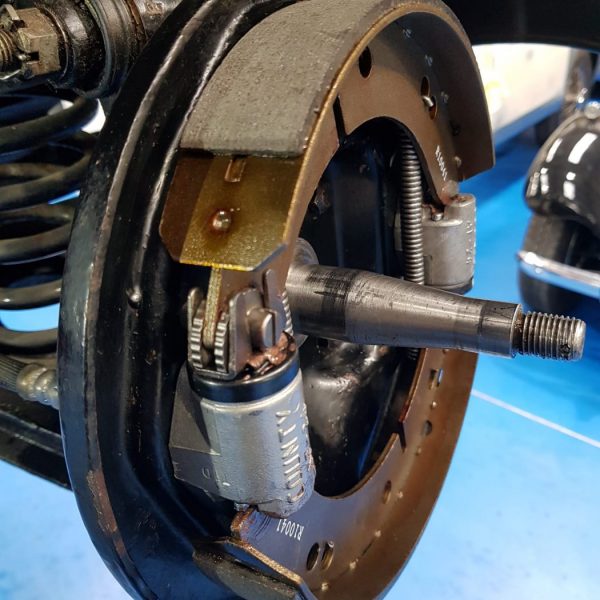

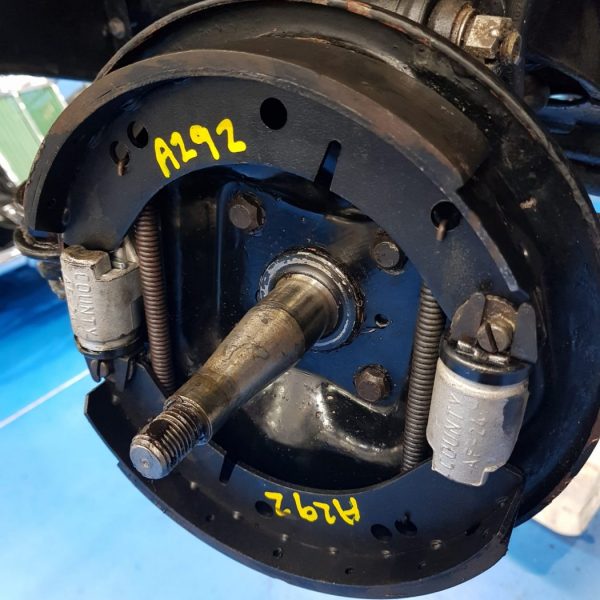
The 1952 MG YB in the Bridge Classic Cars workshop has come into our restoration team for a brake service.
Rob carefully took apart the brakes on the classic MG saloon to inspect all the shoes, seals, cylinders and hardware. Upon inspection of the front brakes, he discovered the wheel cylinders to be leaking and had soaked into the shoe material. So a new set of shoes and cylinders were installed into the front and adjusted out.
At the rear, the cylinders, shoes and hardware were all in good order and just required a rebuild and adjustment. After this, the brake system was bled ahead of it beginning road tests and adjustments if needed.
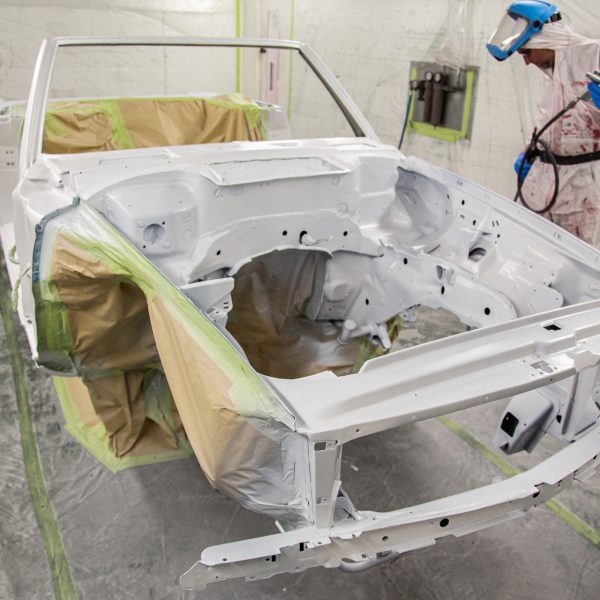


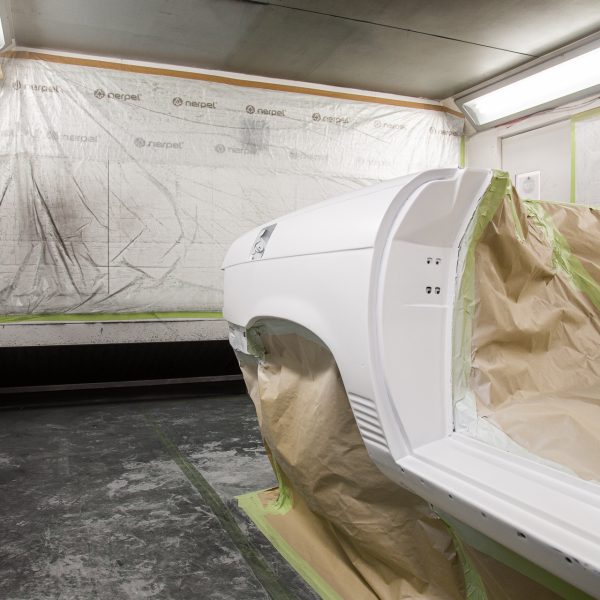

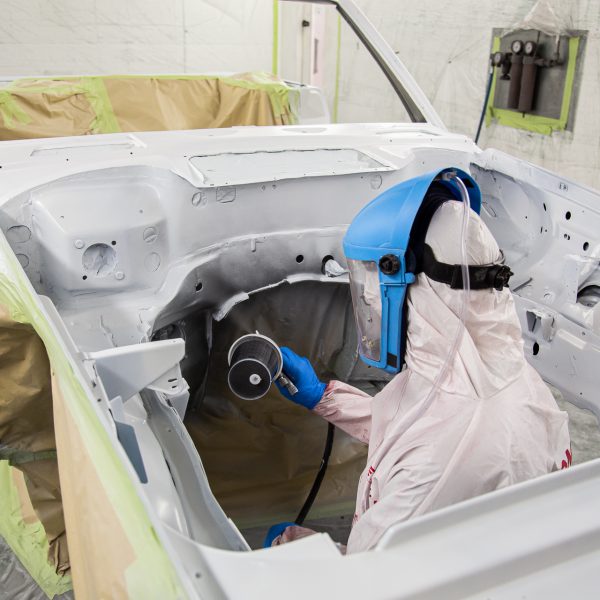
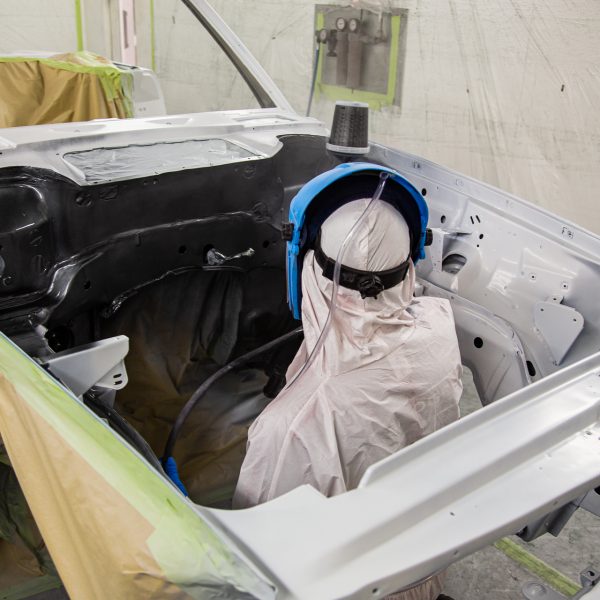
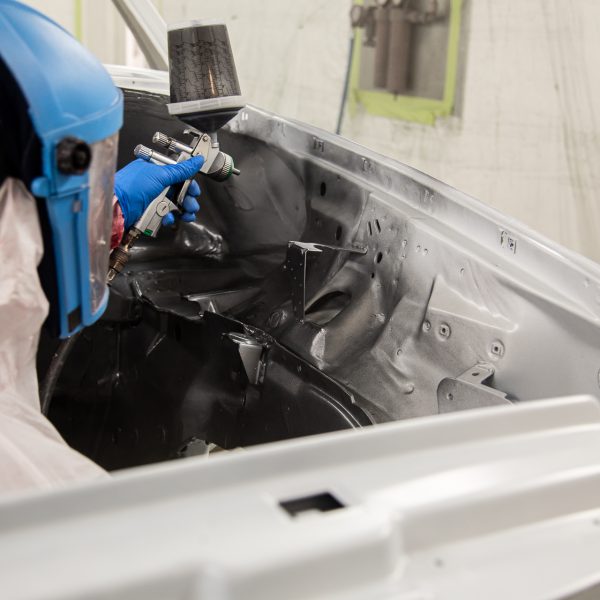


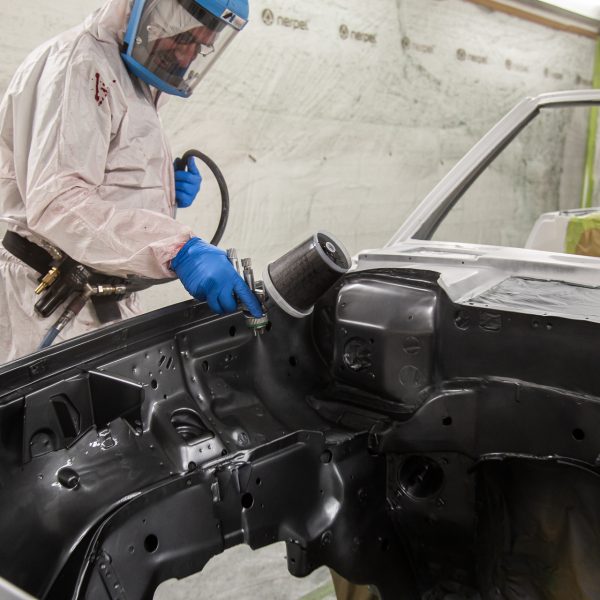
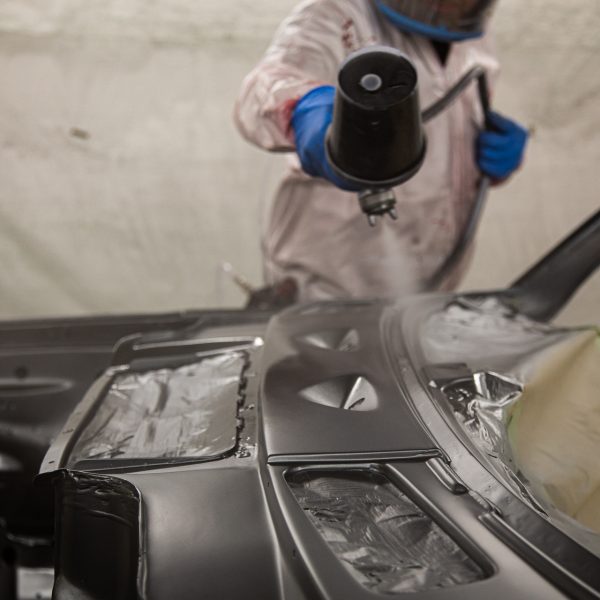
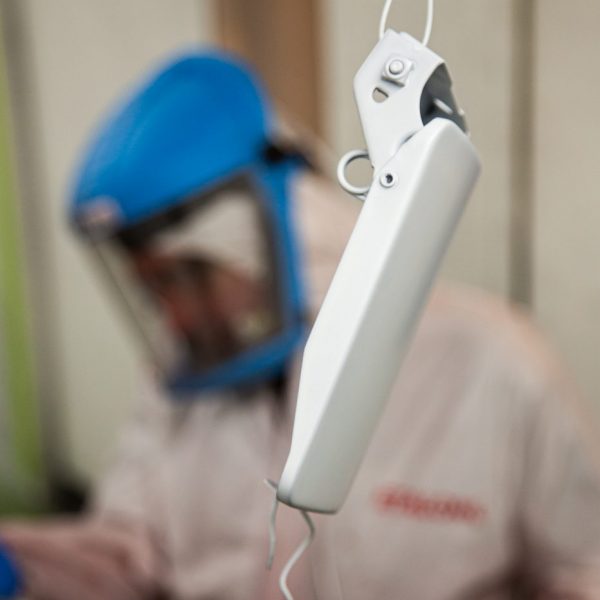
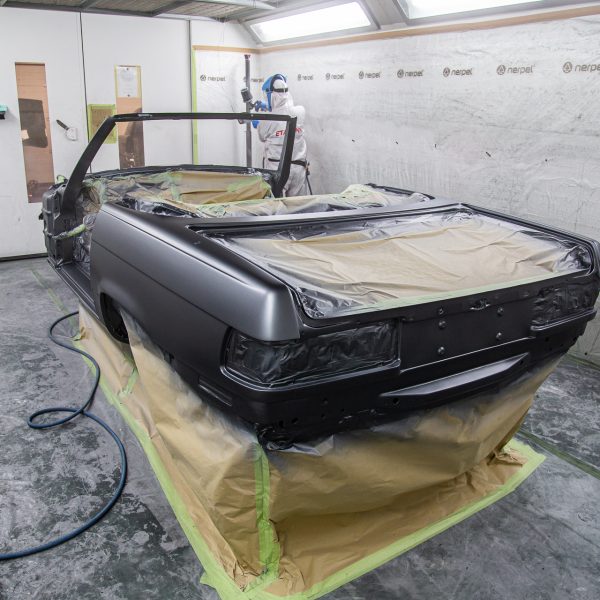

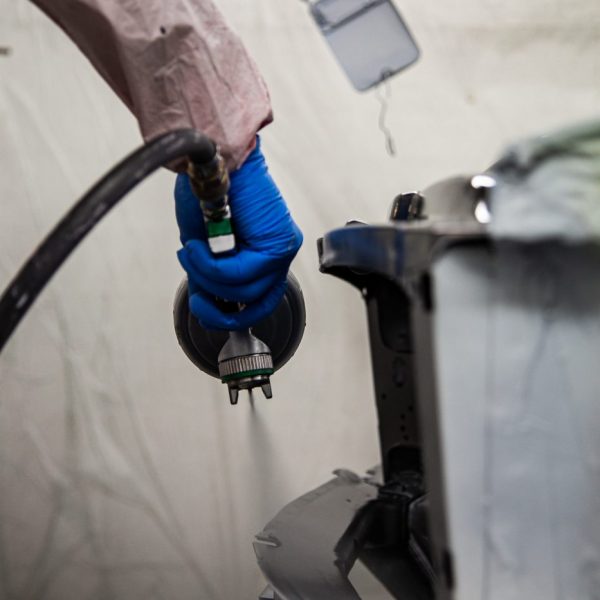
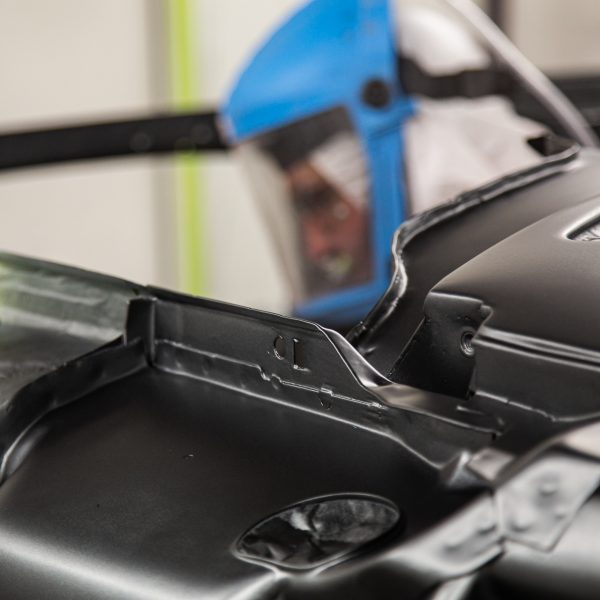
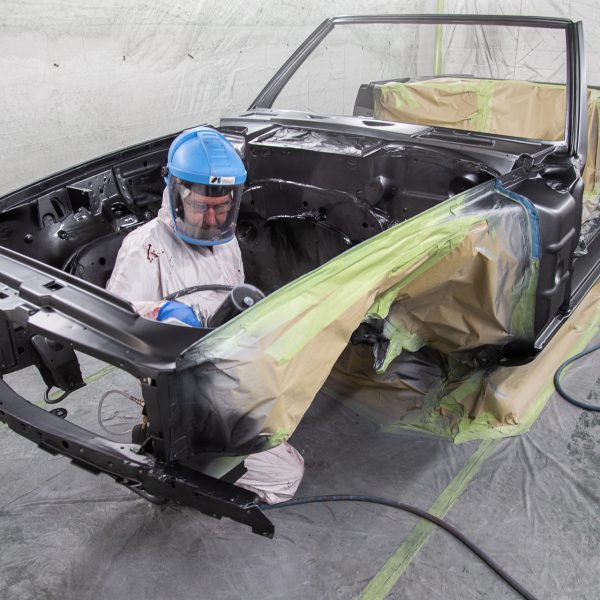
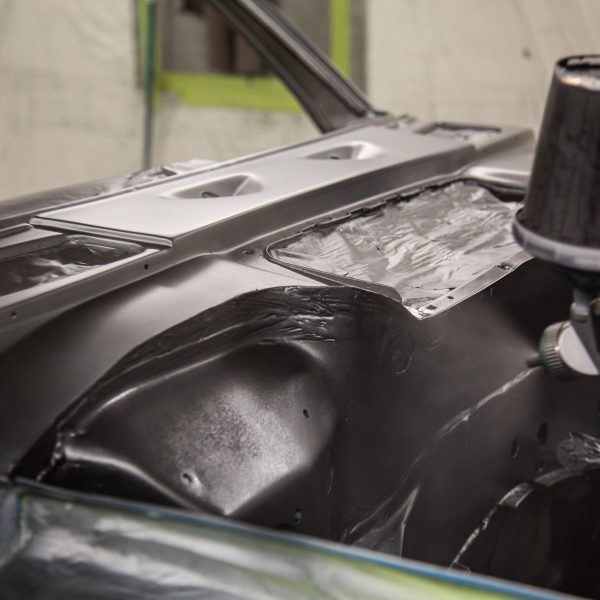
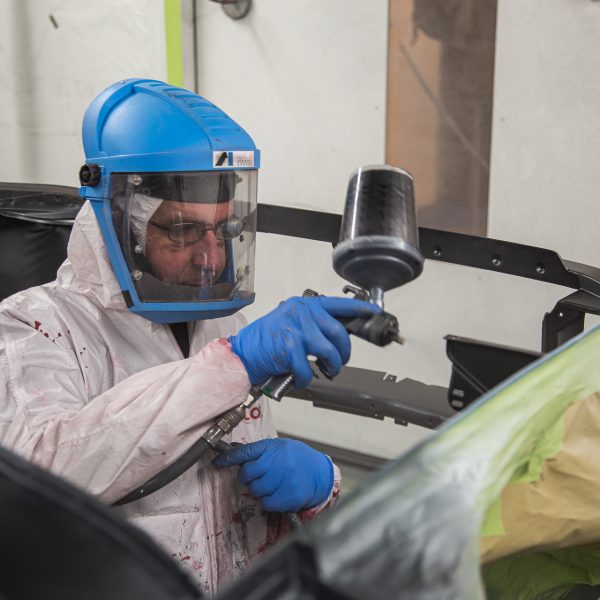
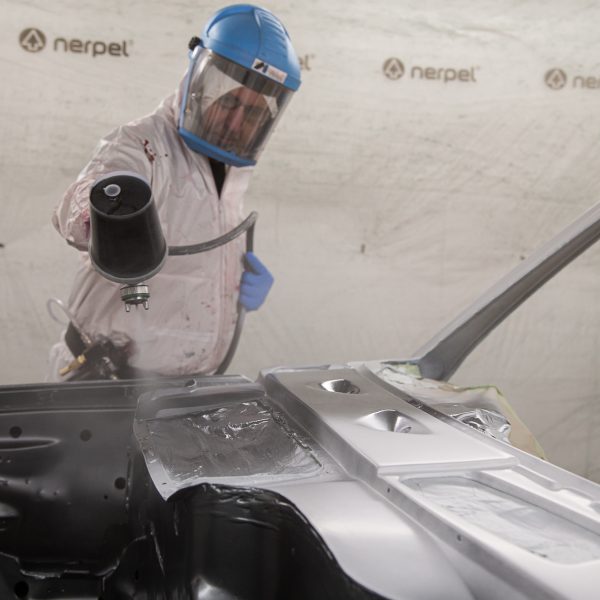
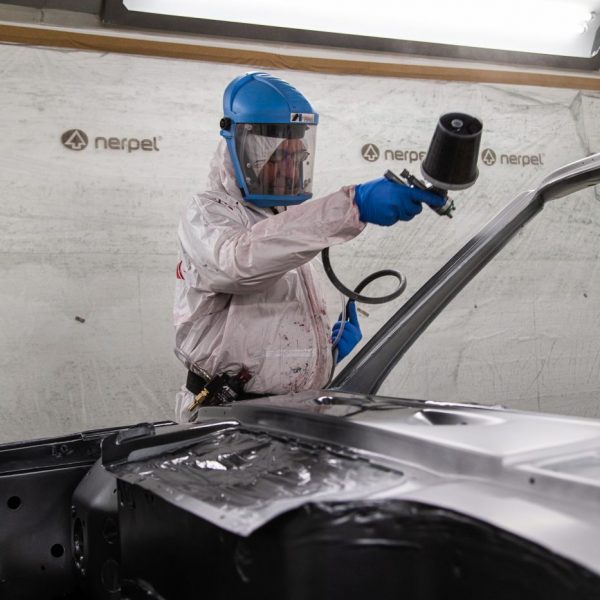

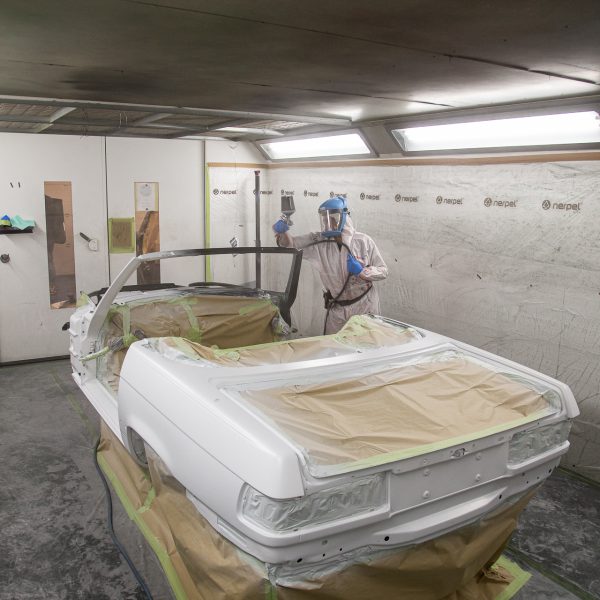
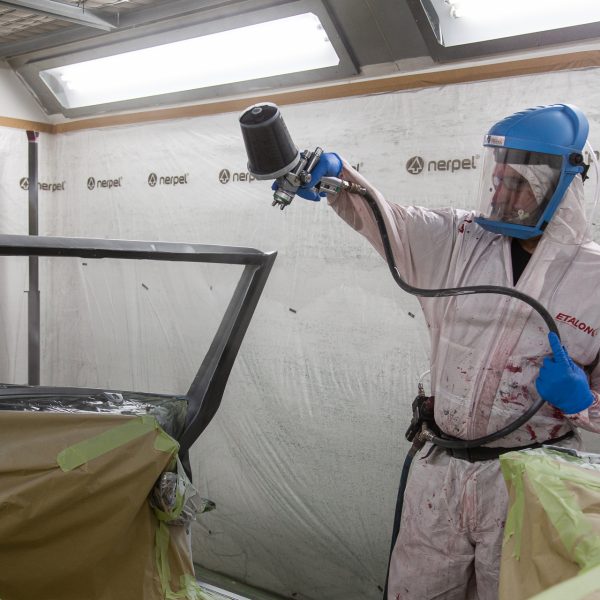

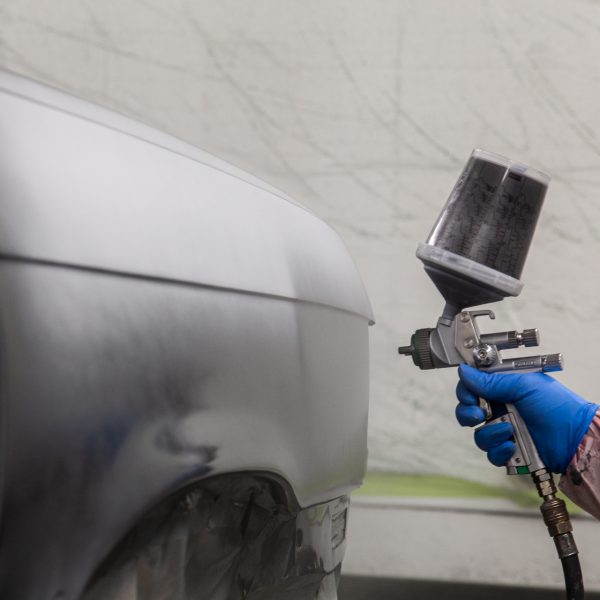
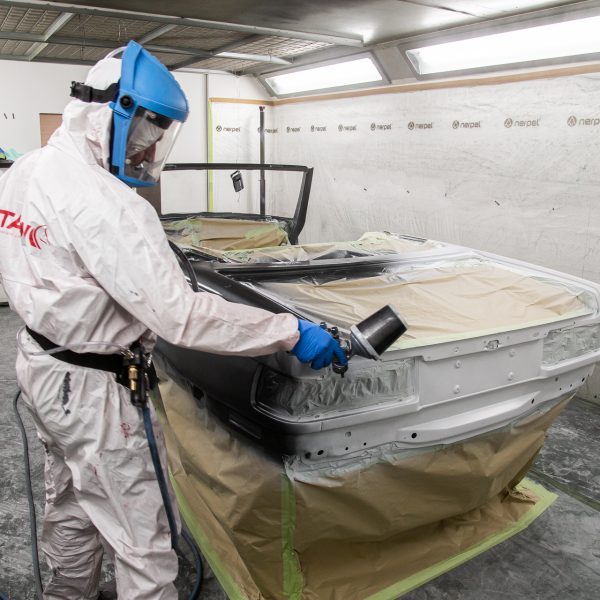


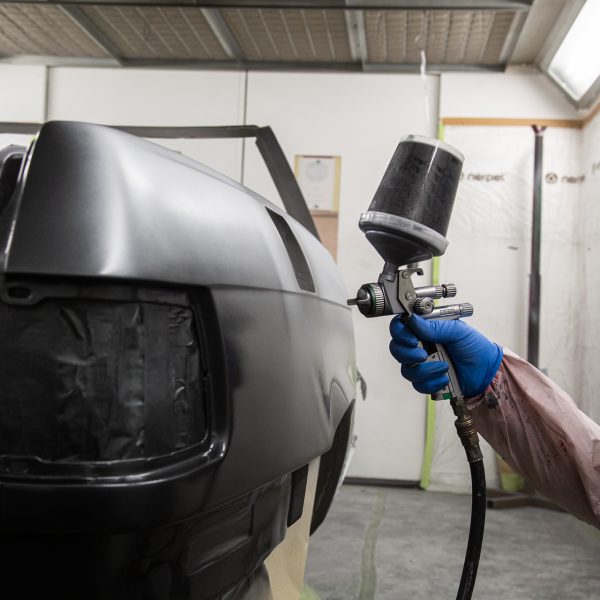
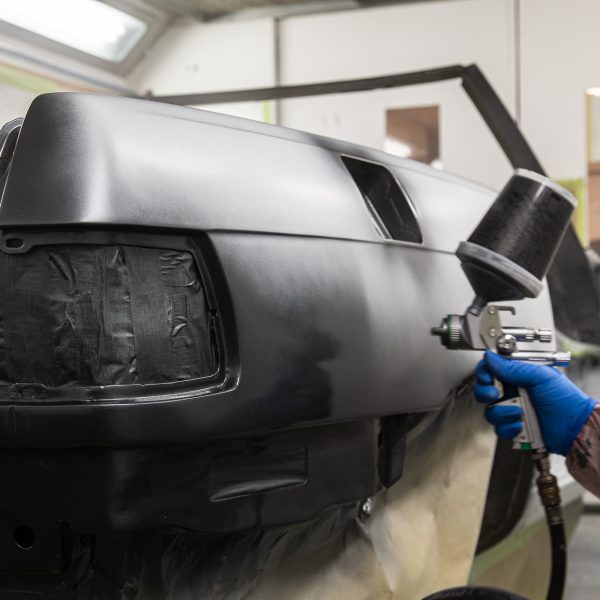
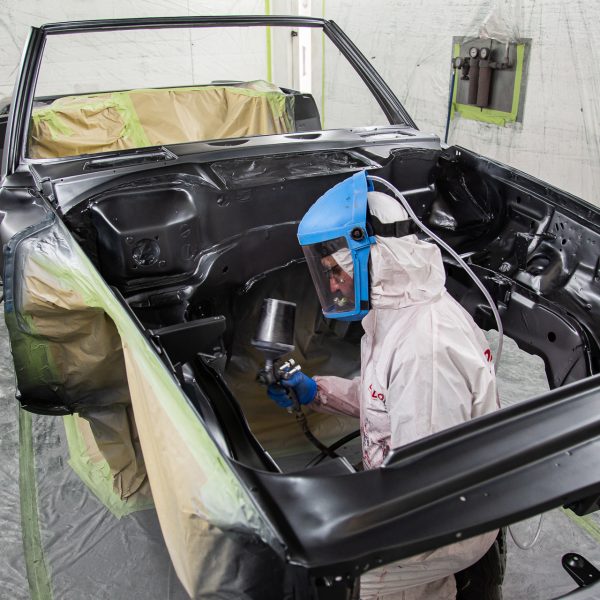
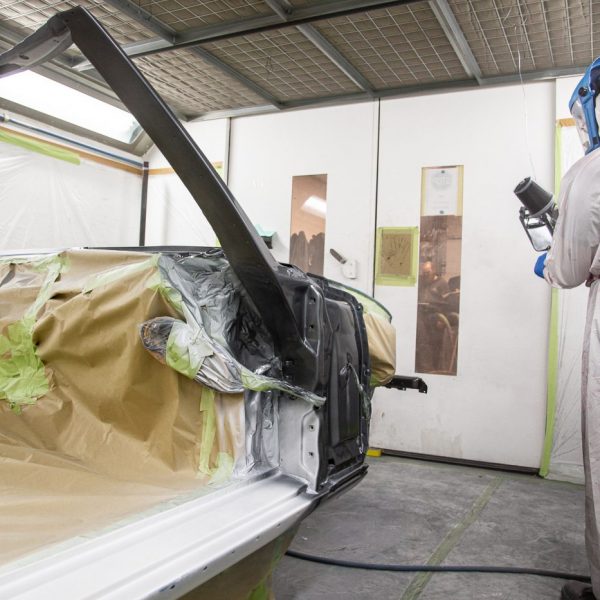
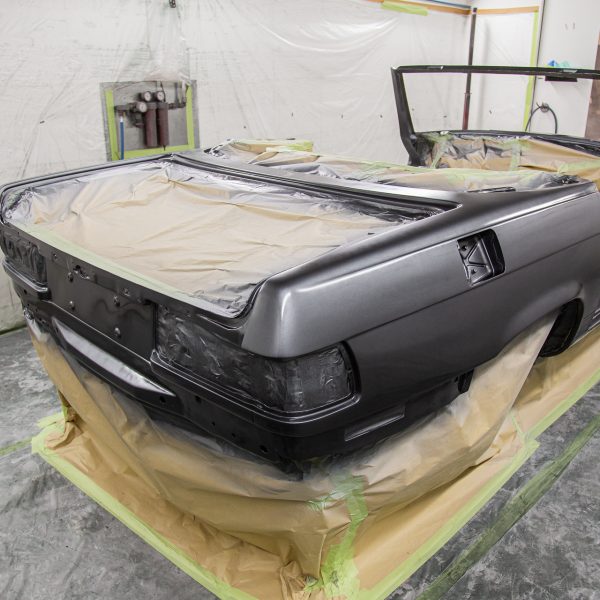

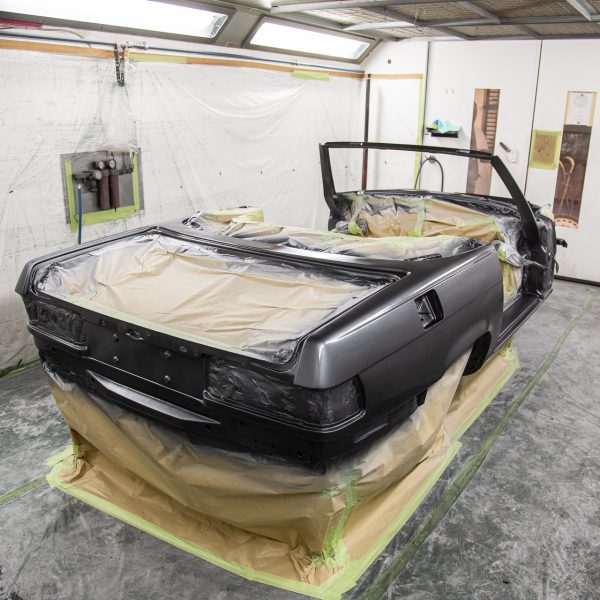
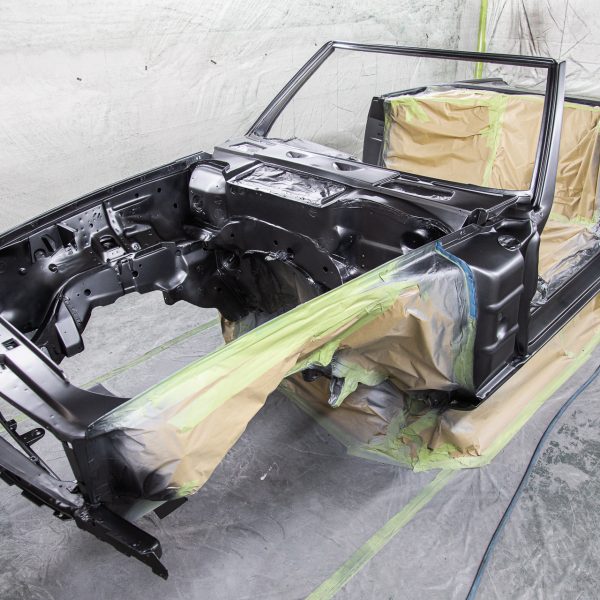
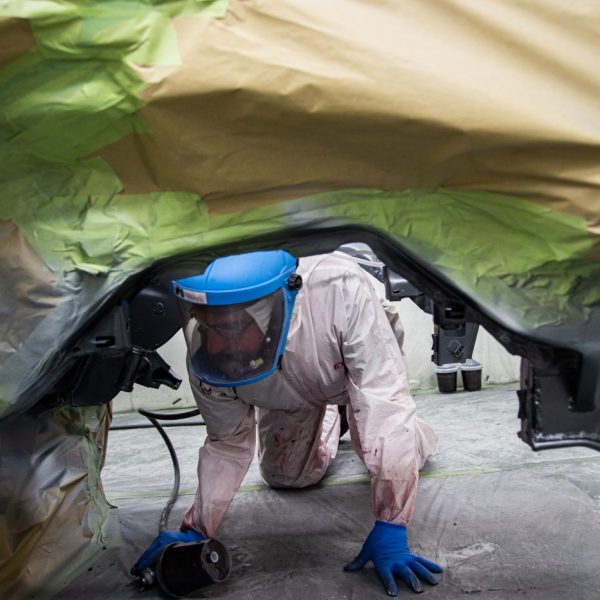

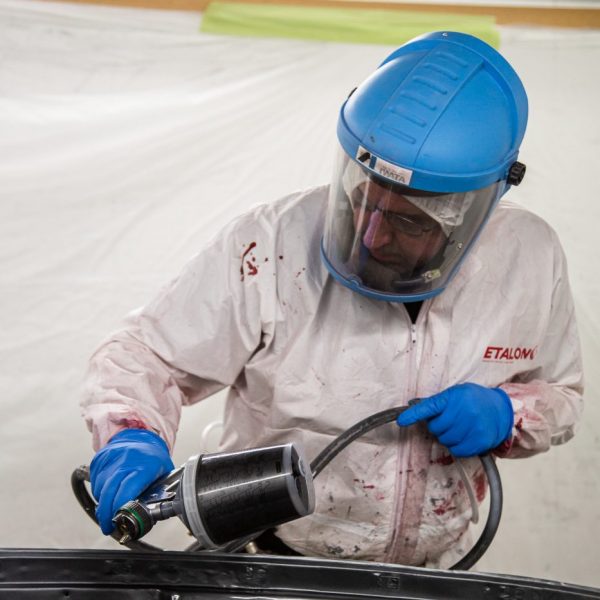
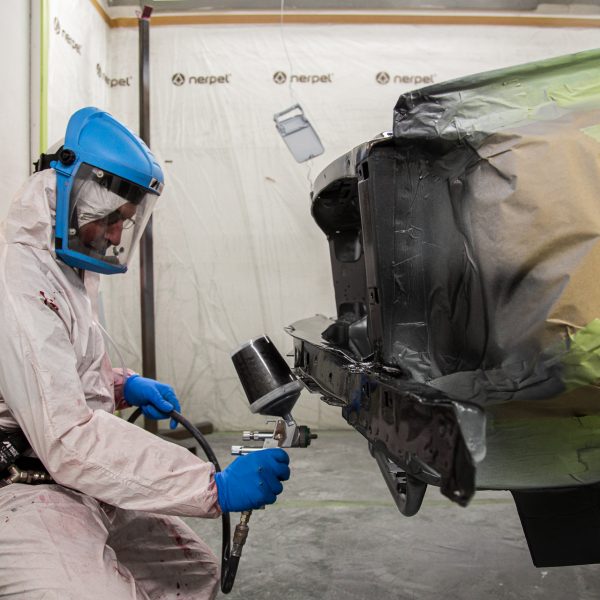
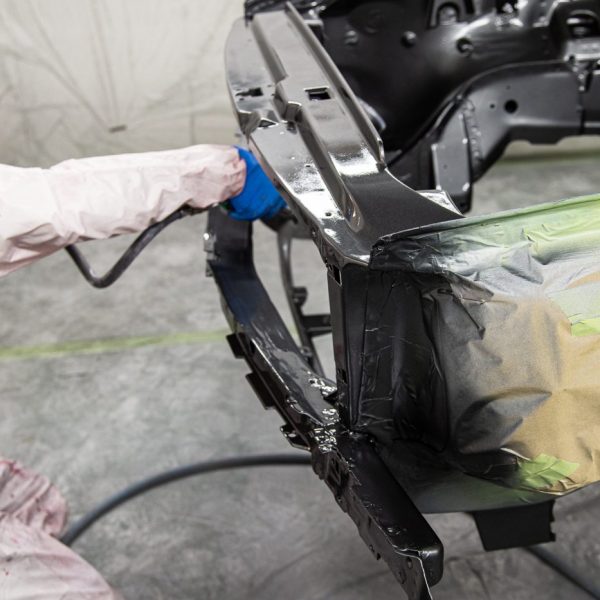
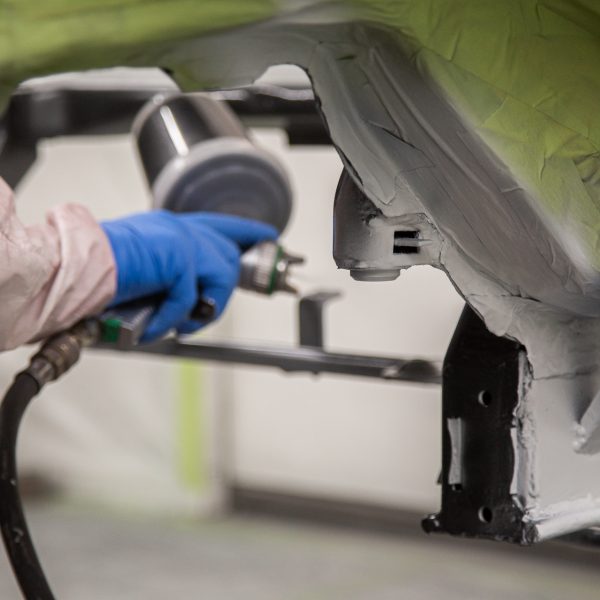
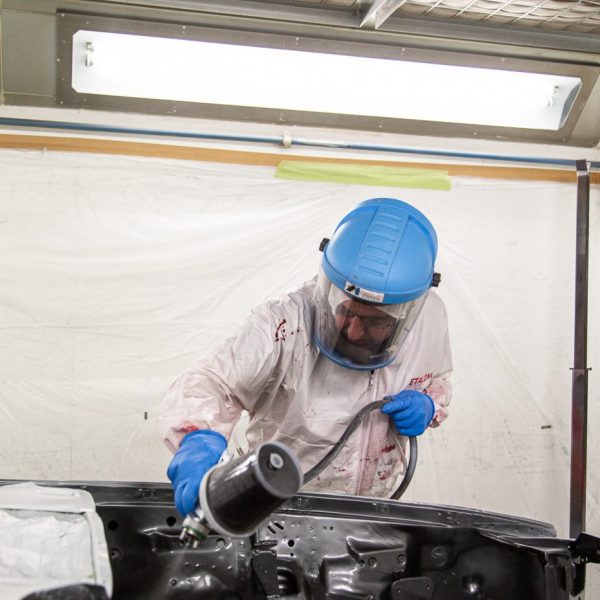
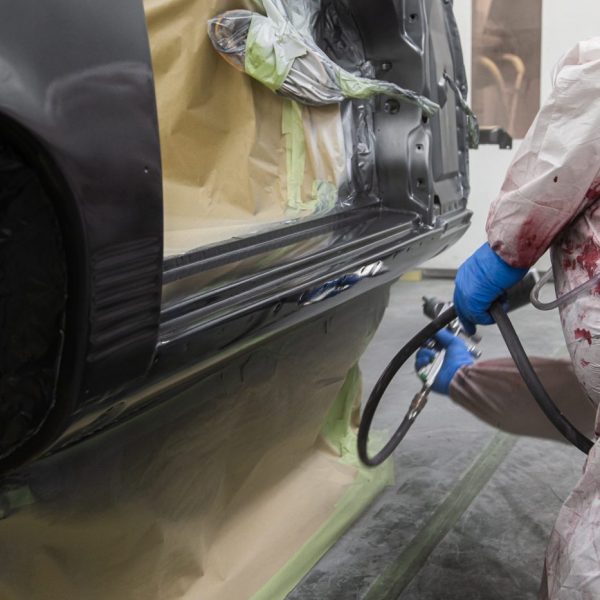
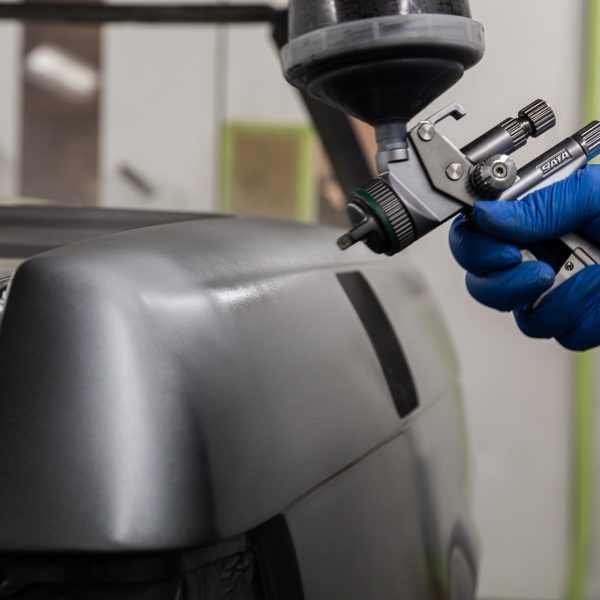

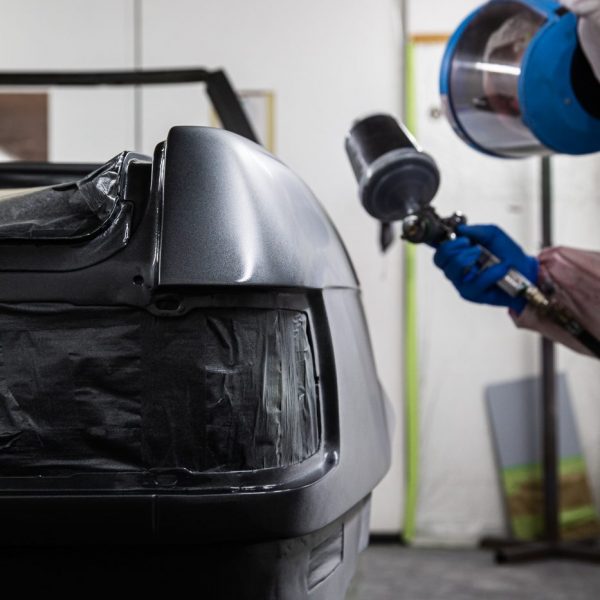
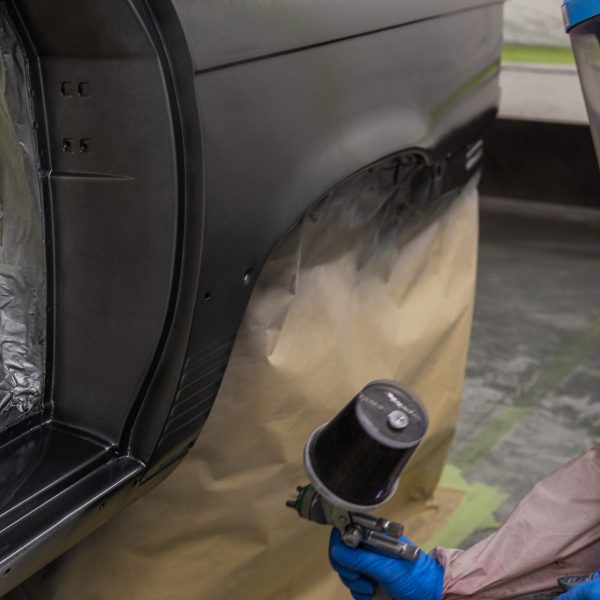
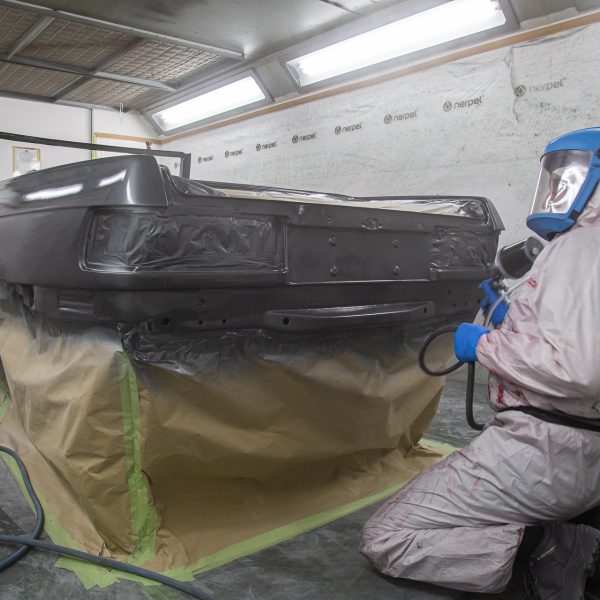
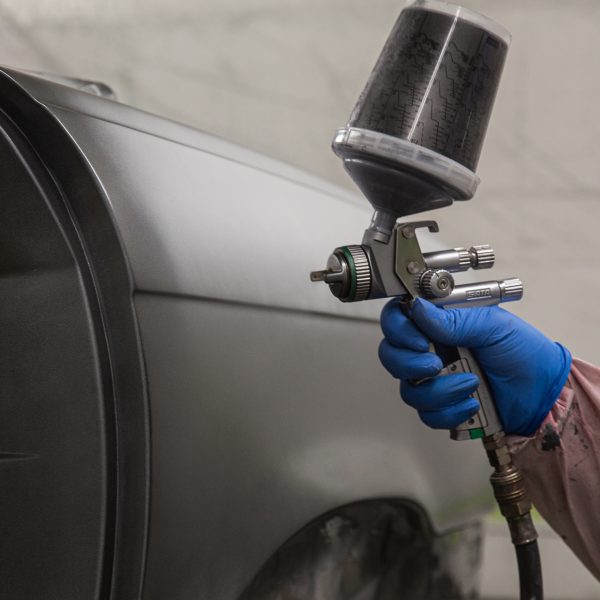

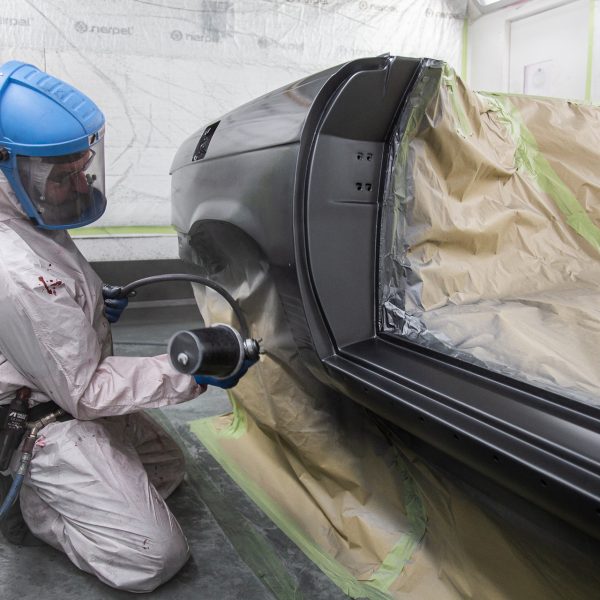


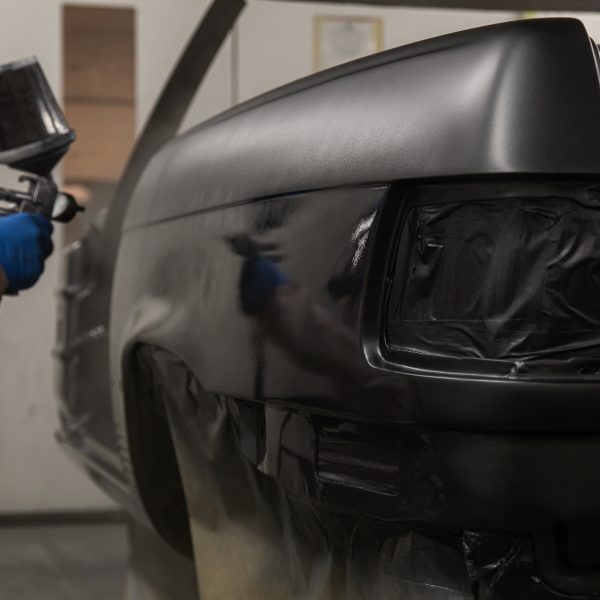
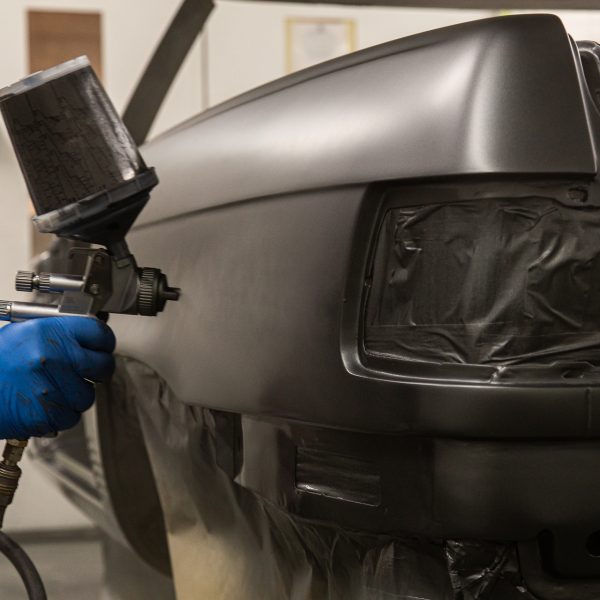
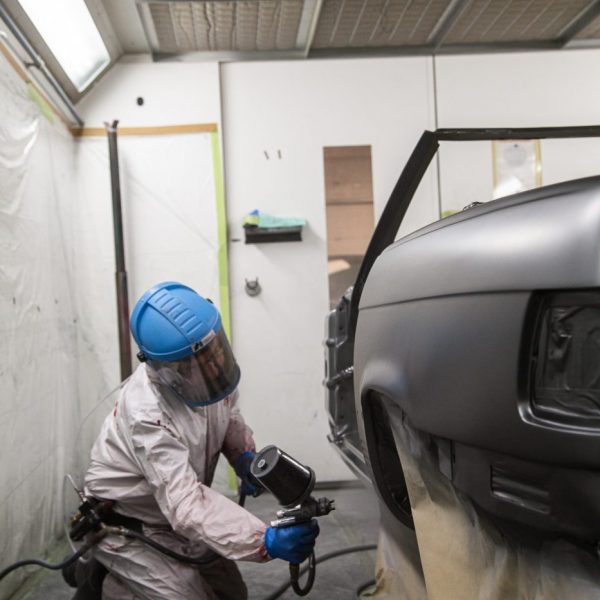
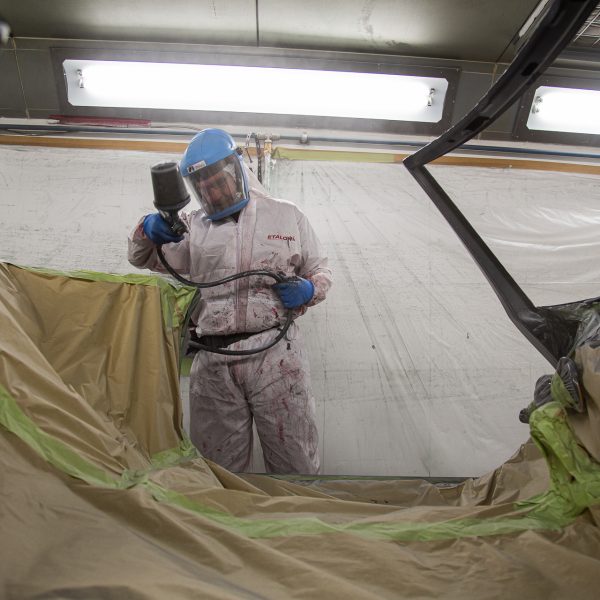
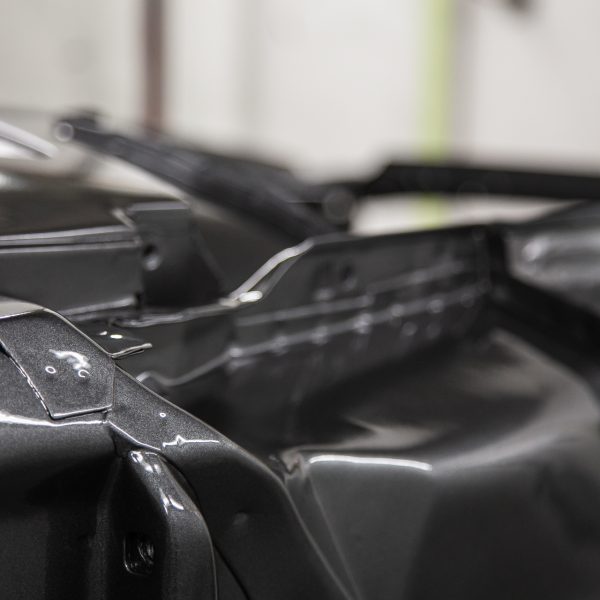
The 1987 Mercedes 500SL has been moved from the preparation area at Bridge Classic Cars into the paint shop and then, into our in-house paint booth/oven.
The paint and body team, along with the fabrication shop, have spent a lot of time getting the classic R107 ready for its date with the paint booth making sure each part, panel and piece was perfect before beginning the painting process.
The car is being finished in a classic Mercedes colour, Selenet Grey. Most notably seen on the classic 280SL Pagodas, it was chosen to compliment the beautiful burgundy red interior that the trim team have made for the car.
So, with the car ready it was time for Alan and Nick to go into the booth with the car and lay down the first coat onto the body of the SL. Starting with the engine bay.
Alan began under the transmission tunnel and worked his way up and across the firewall making sure every inch was covered to give each coat an even and flowing look. The inner wheel arches and front core support finished off the first stage. Then, Alan began to work getting the scuttle panel and windscreen surround shot in the dark, deep grey and worked his way back towards the boot on the classic Mercedes.
The rear quarter panels and rocker panels were coloured line by line. Each gently overlapping on the previous to give the consistent and uniform look needed to achieve the flawless finish that comes with Selenet Grey. But with the car having its first coat complete, it was time to let it settle and get the paint mixed for the next round.
The 2nd coat was done in the same order as the first. Alan making sure to get every exposed piece of bodywork coated properly for the uniform look. Again, it was all about consistency and movement in order to achieve the finish on the classic R107. And once the 2nd layer had flashed off, Alan waited for the prescribed time and then shot the 3rd coat to finish off the car.
With that, it was left in the ovens to completely cure and harden. Once it has completely hardened, it will be carefully transferred back to the preparation area in order for polishing and preparation for the next stage.
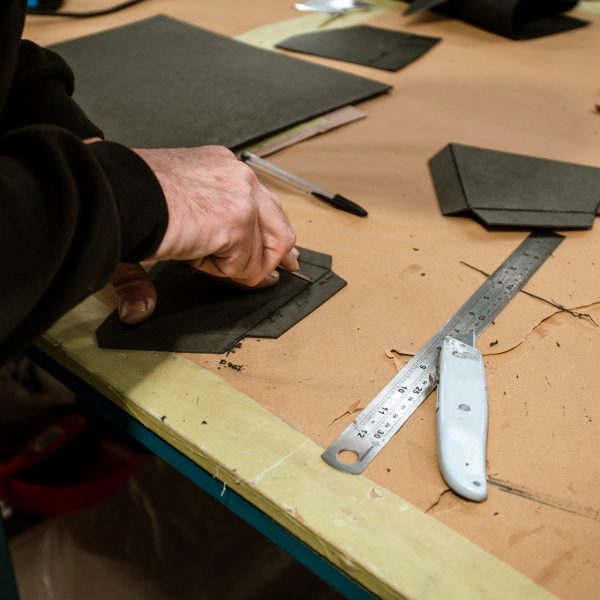

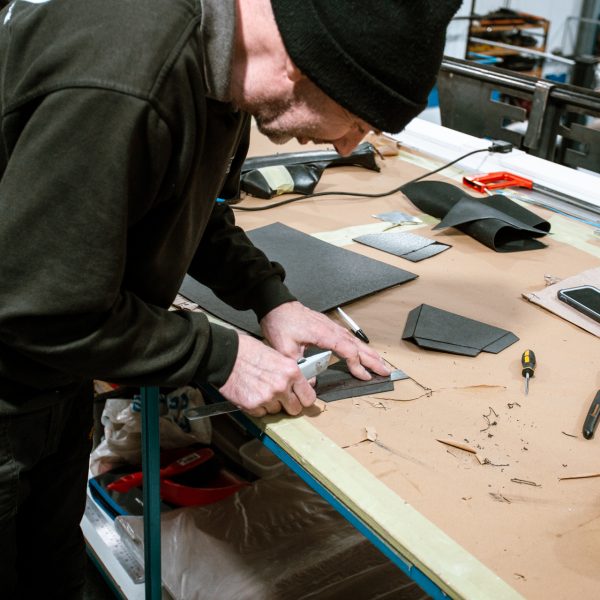

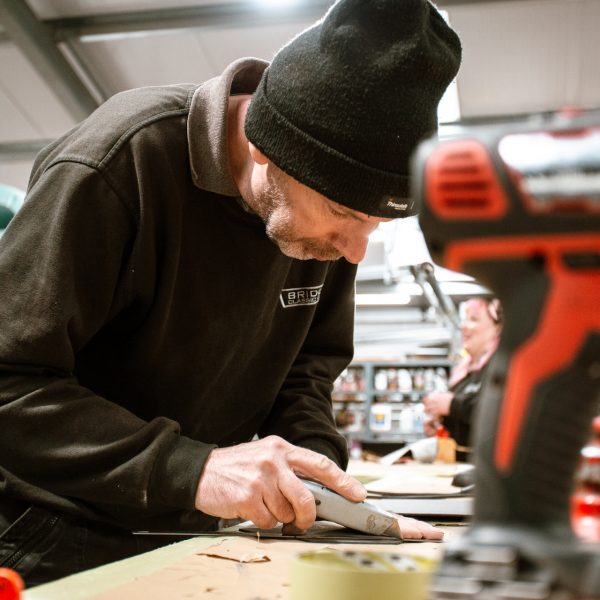
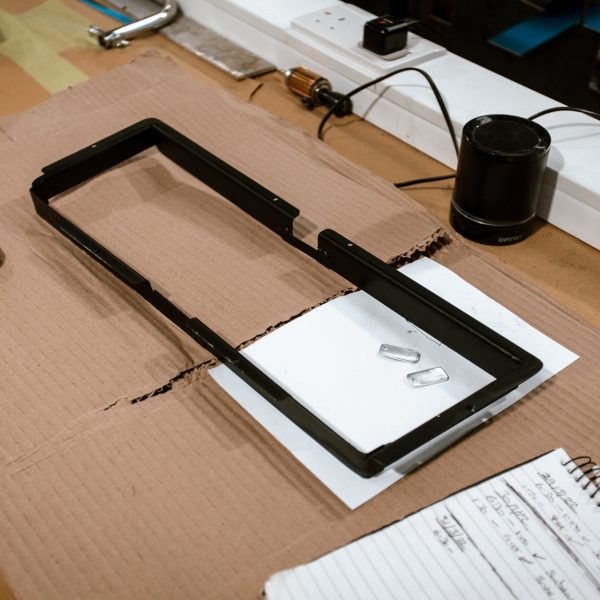
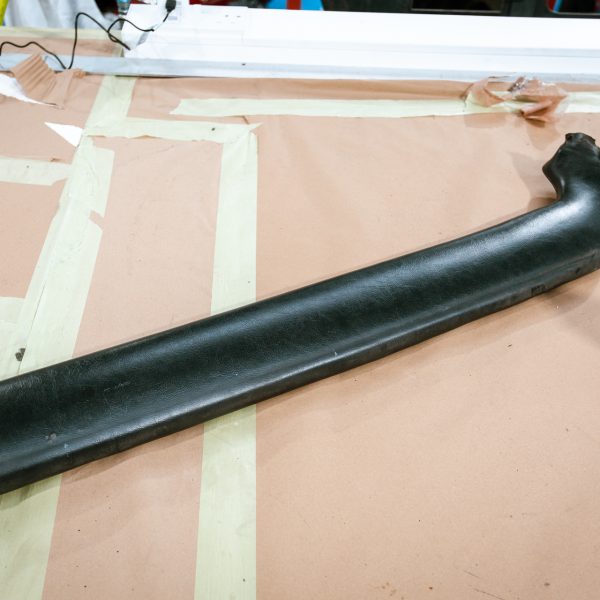

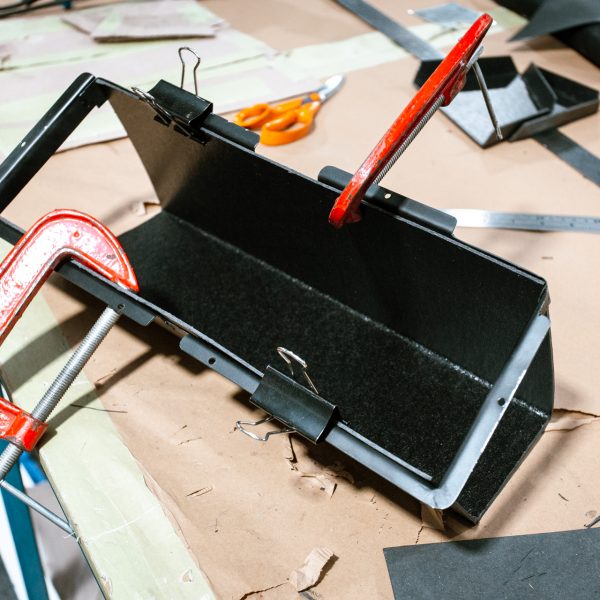



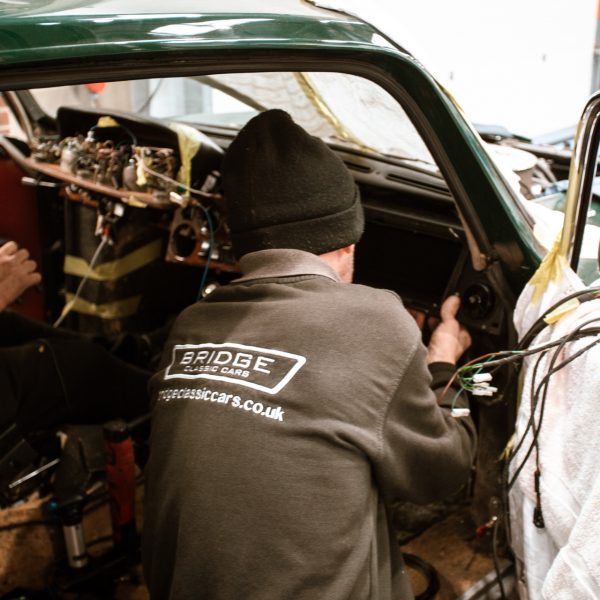
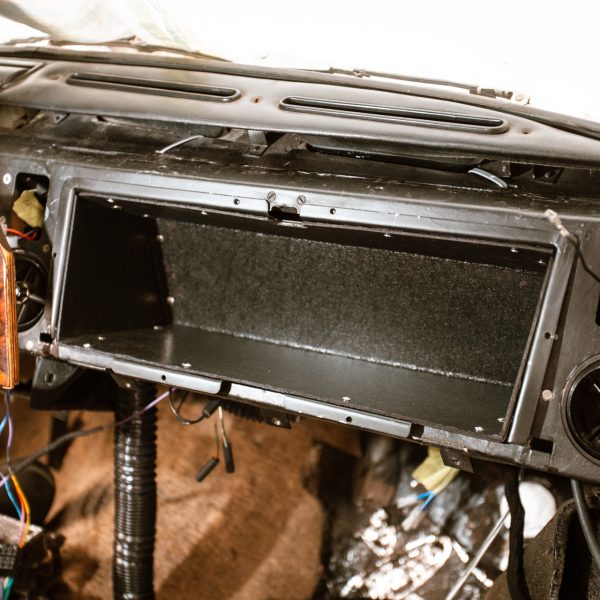
The 1970 Bristol 411, which is having a LHD conversion carried out, has had a brand new glovebox insert made by our incredible trim shop.
Because of the change around in placement, the original insert conflicts with several brackets behind the glovebox itself. So, Brian has made one entirely from scratch built specifically for the car by hand. He took measurements from the car in our workshop to get the best fit possible and also keep it the same volume inside as the original.
It’s a beautiful piece for this unique and special project.
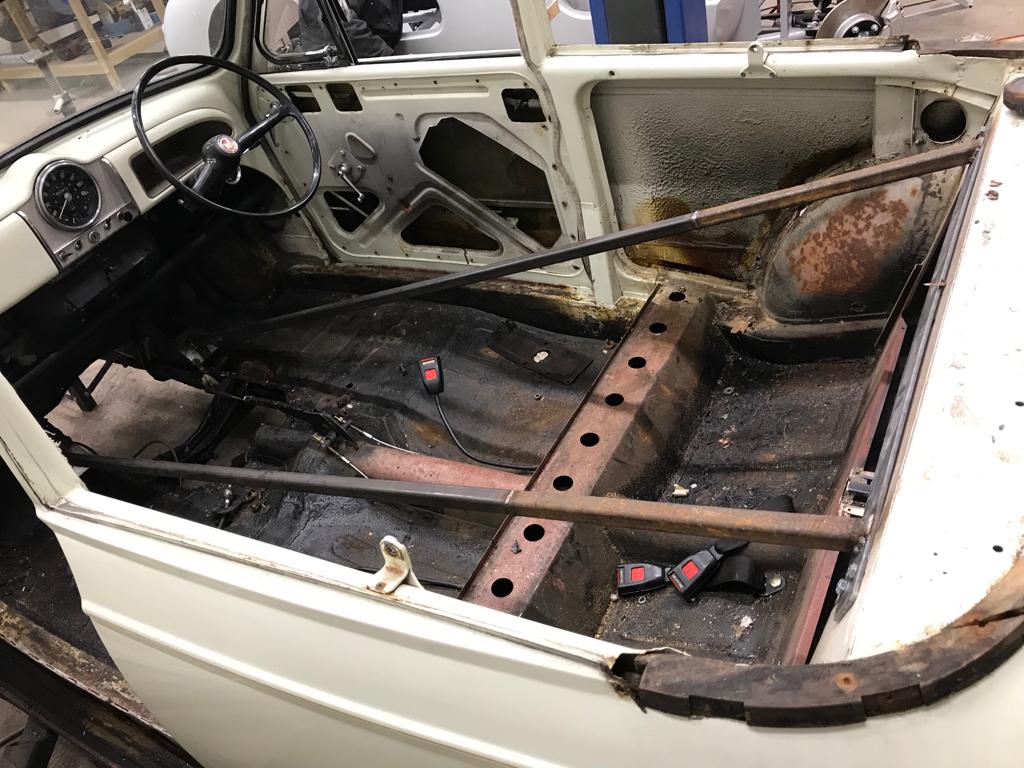

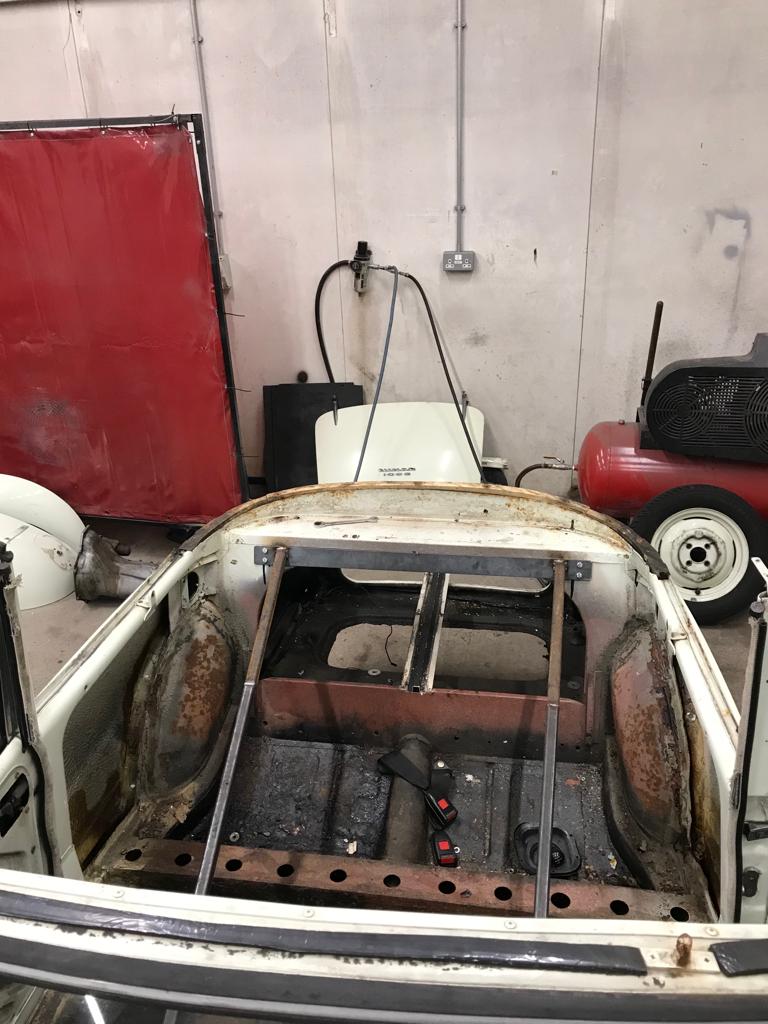
The bodyshell of the 1969 Morris Minor Convertible has been braced by the Bridge Classic Cars fabrication team in preparation of the repairs to begin.
The team have braced and strengthened the bodyshell to ensure that not of the panels move out of alignment when they’re removed and to allow our fabricators to measure them up correctly and accurately to get the best possible fit and finish.
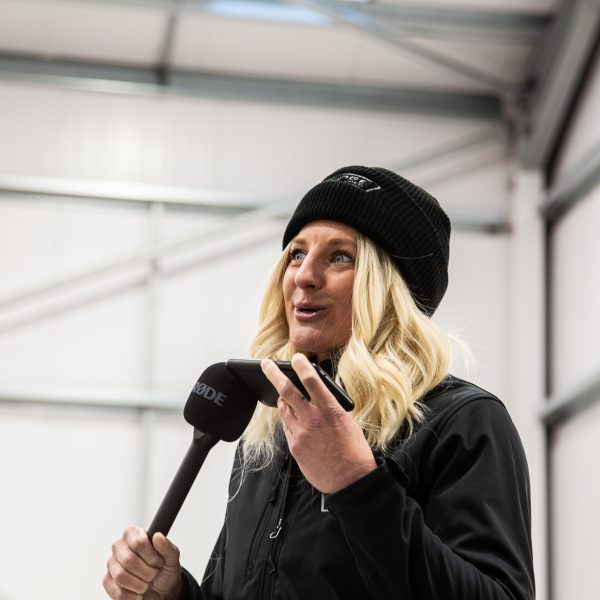
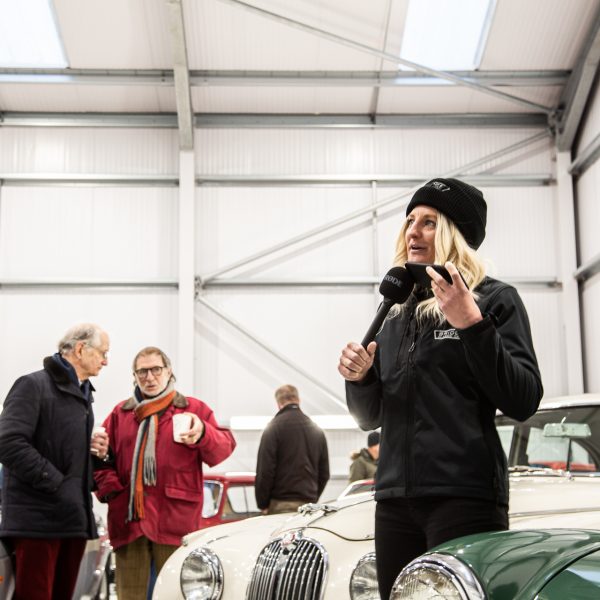
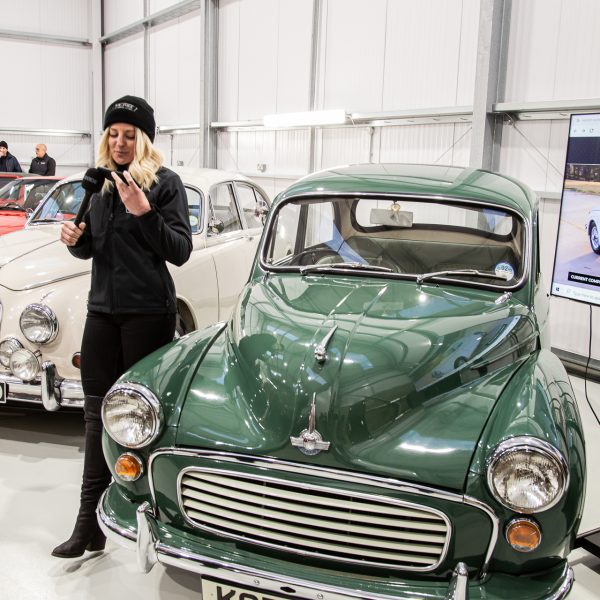
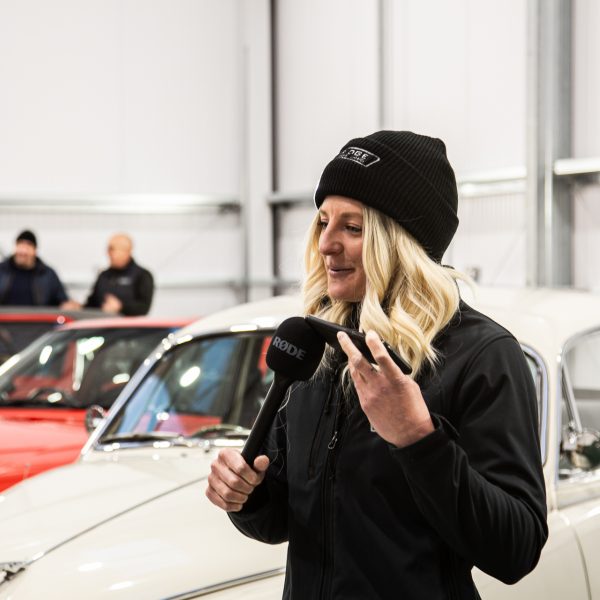

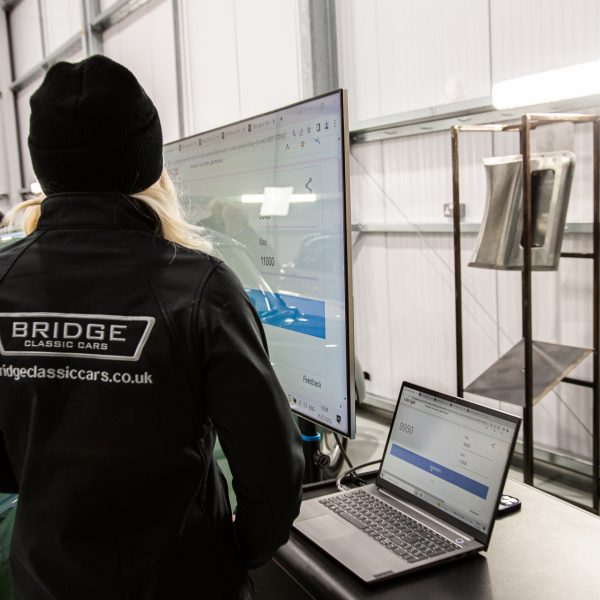
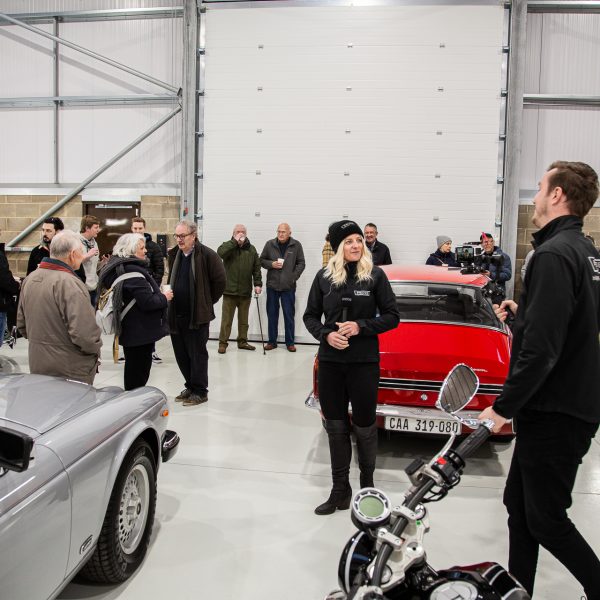
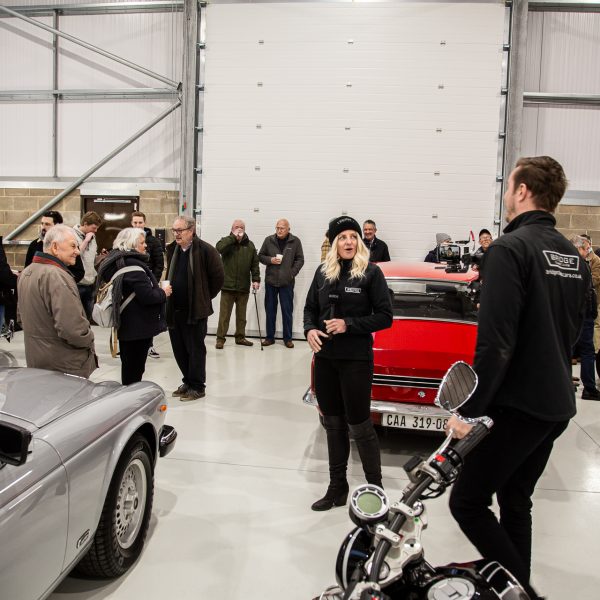

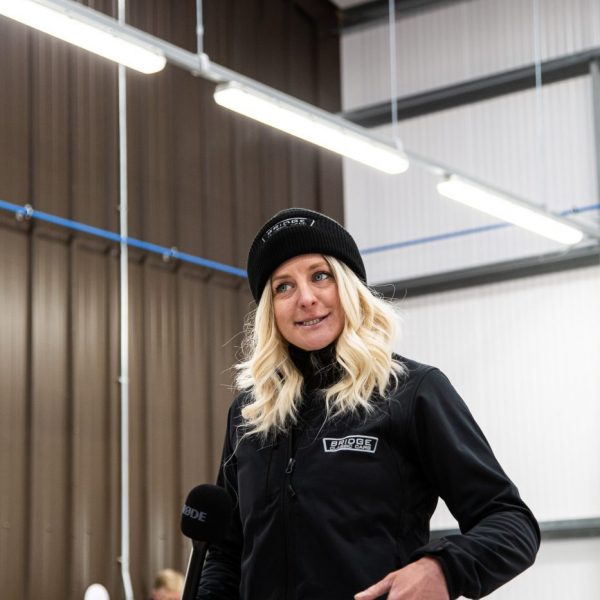



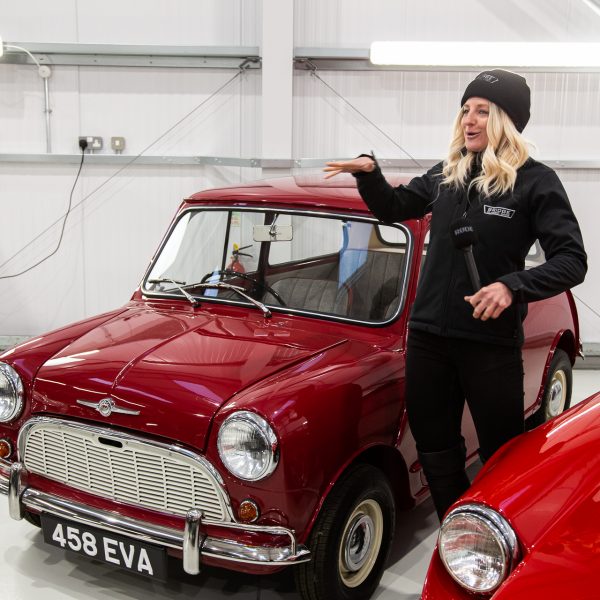
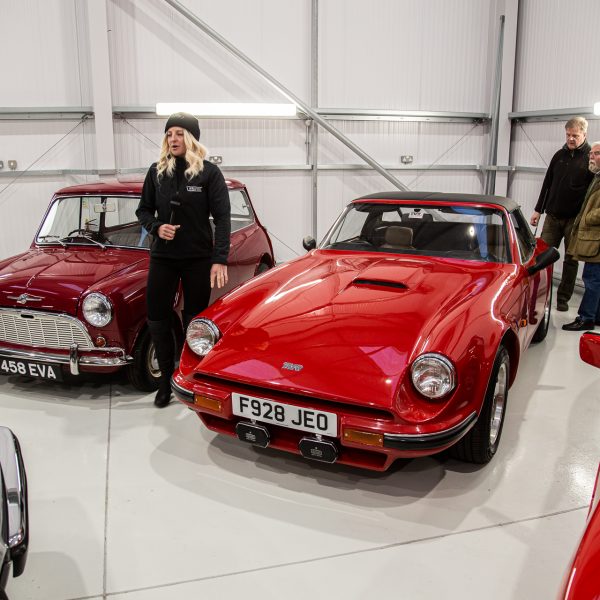
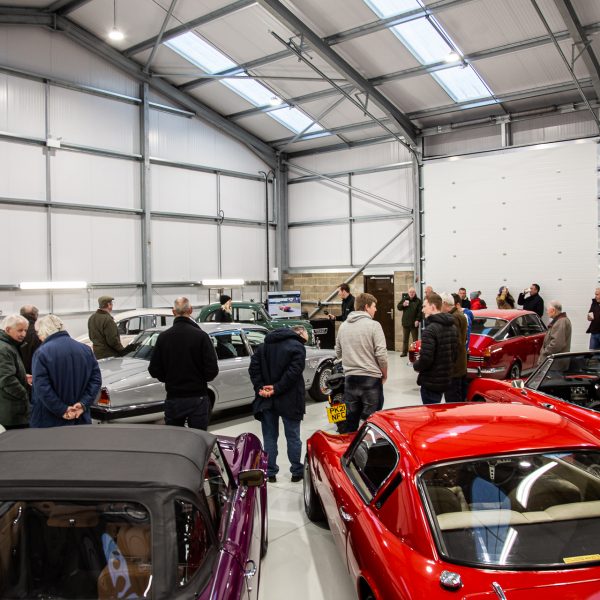
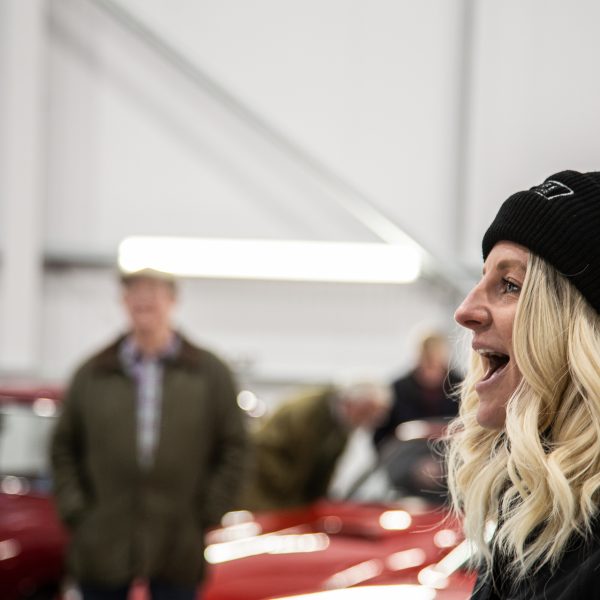

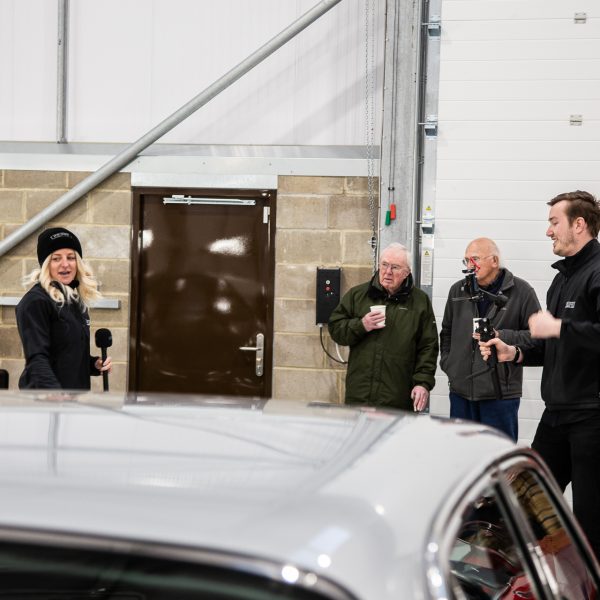
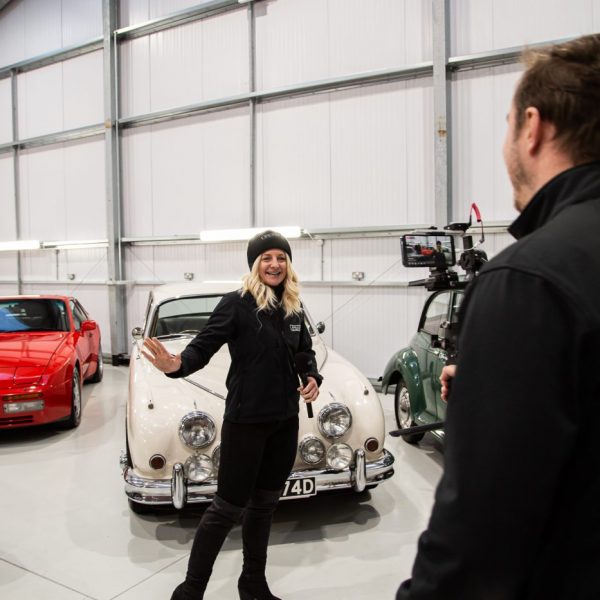

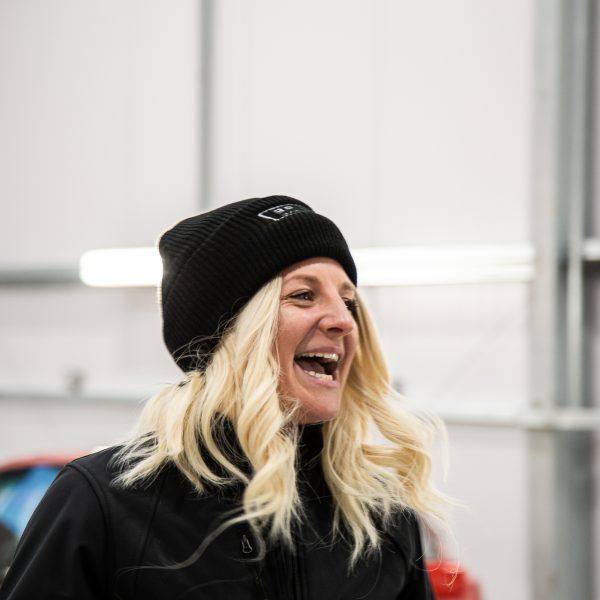
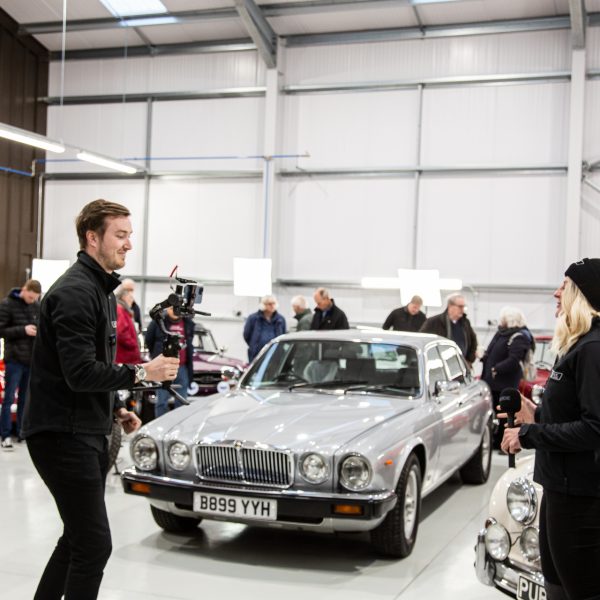
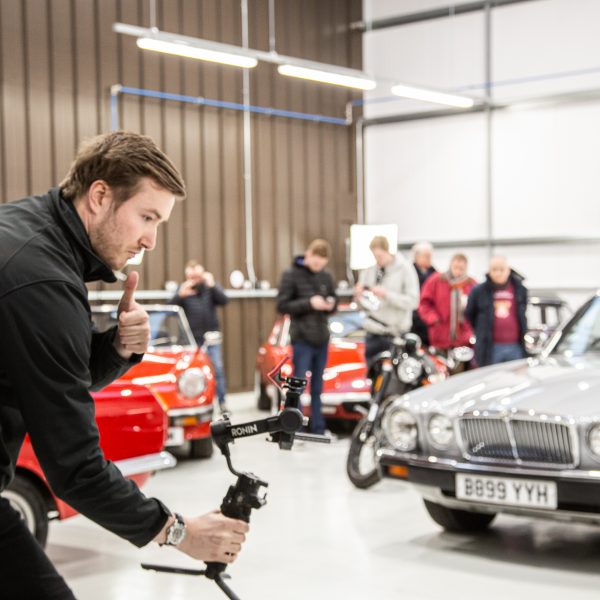


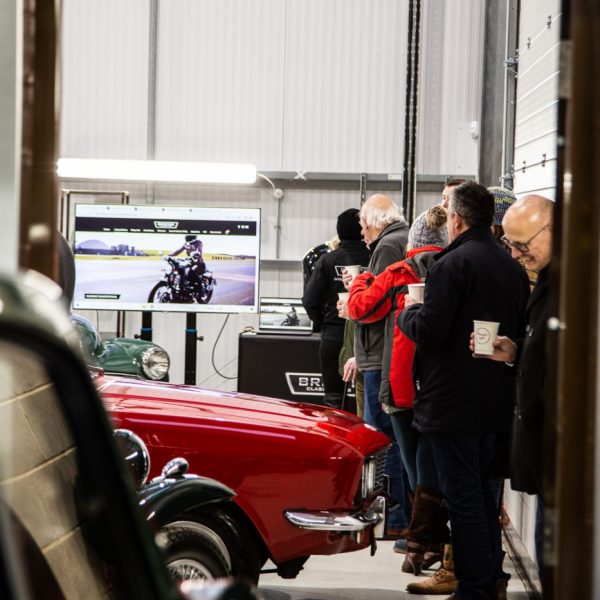



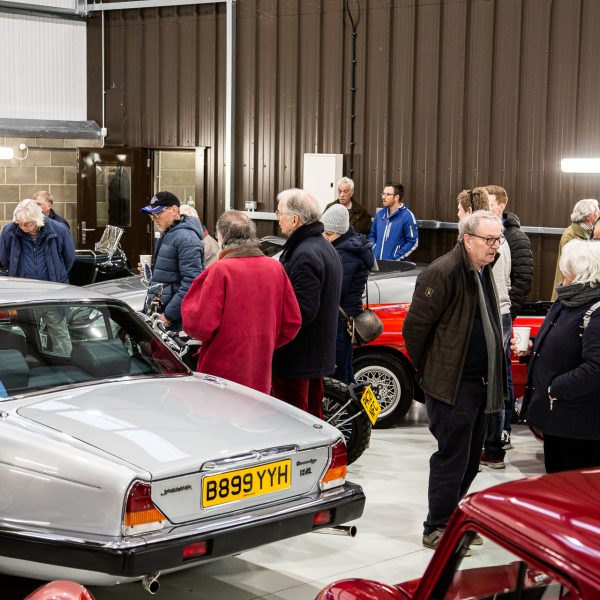
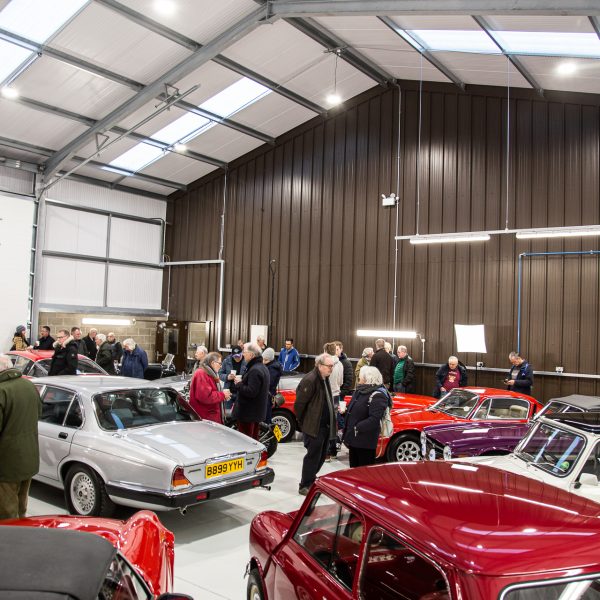
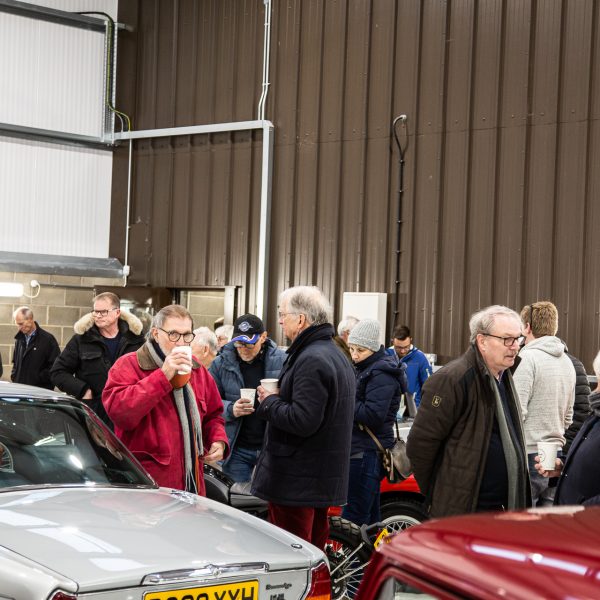
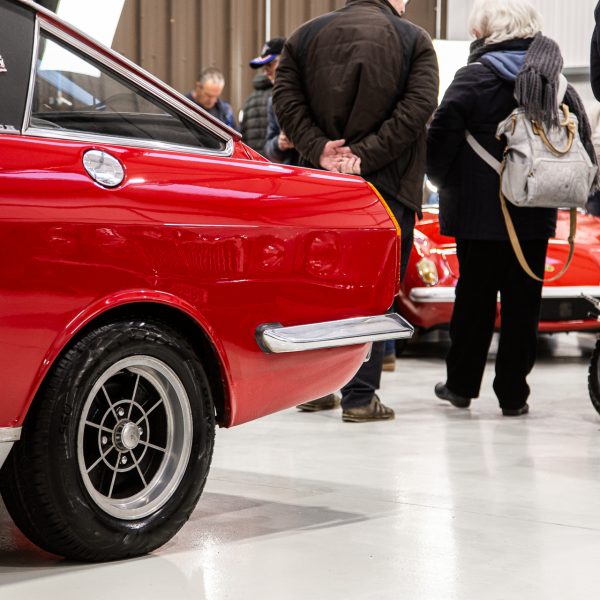

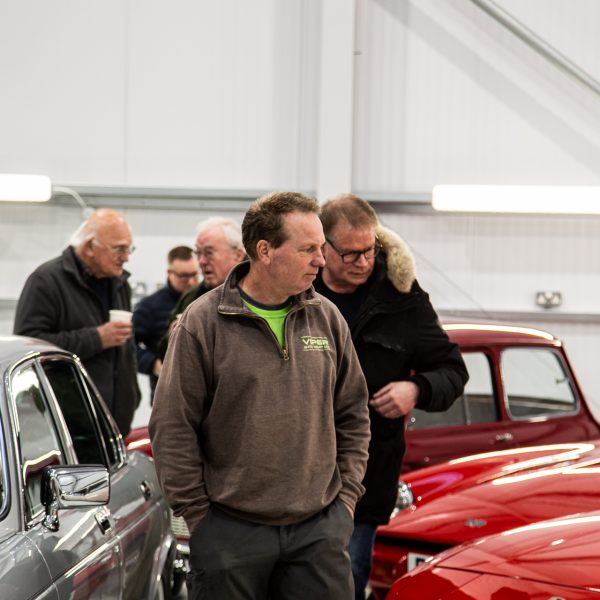



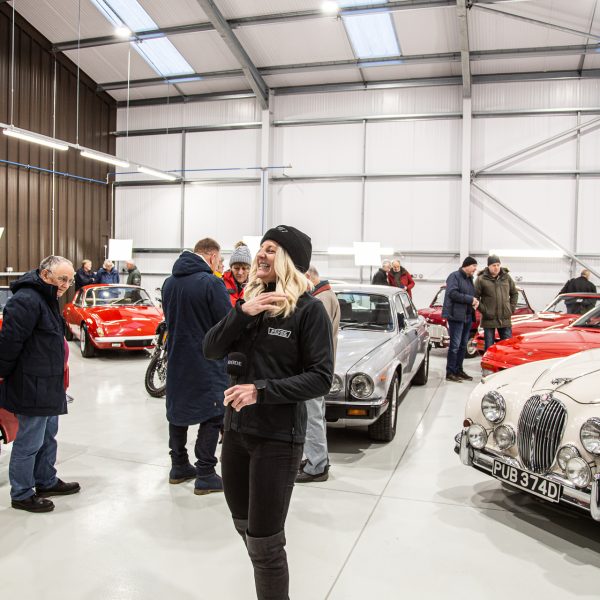
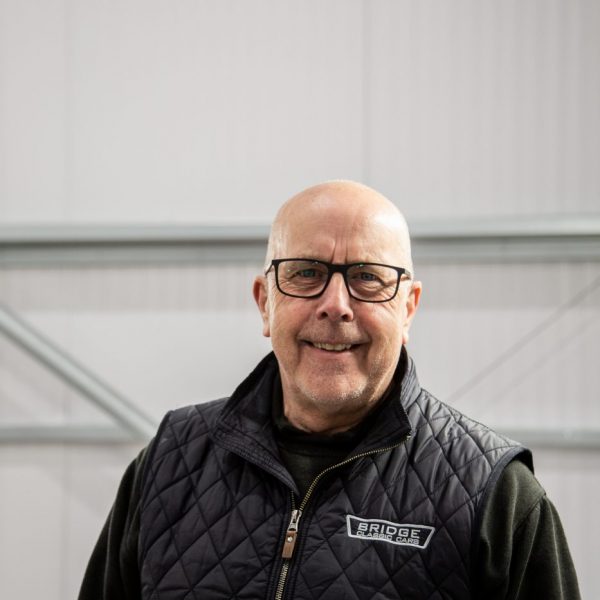

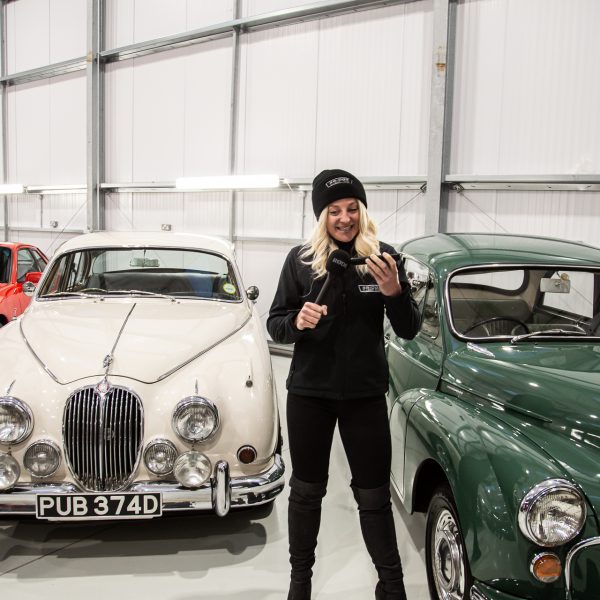
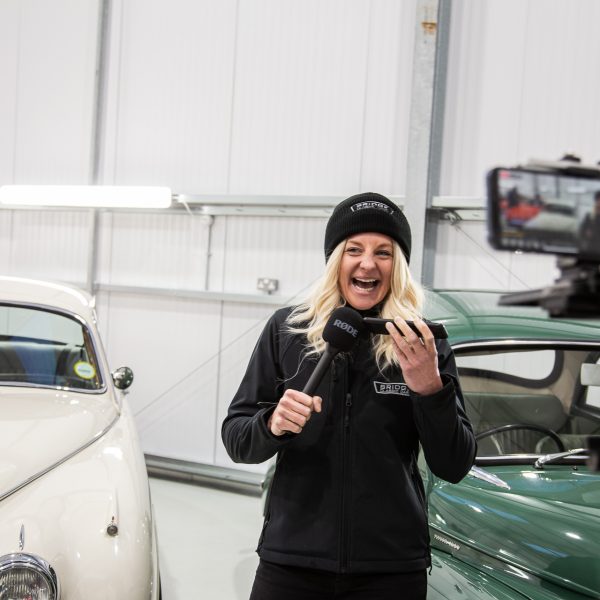
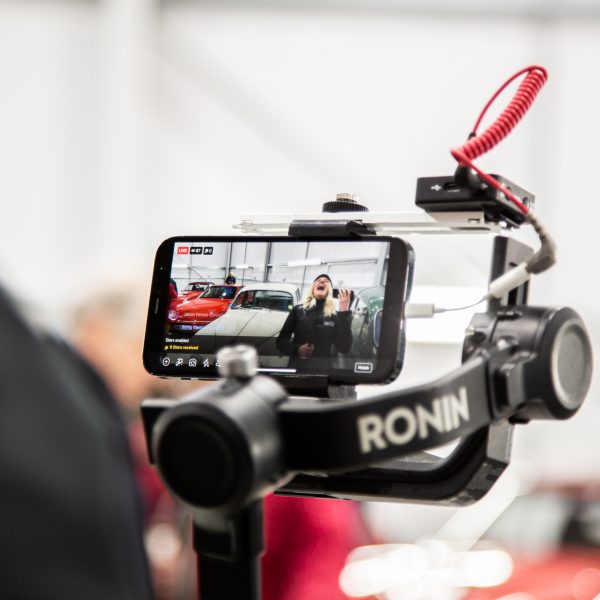

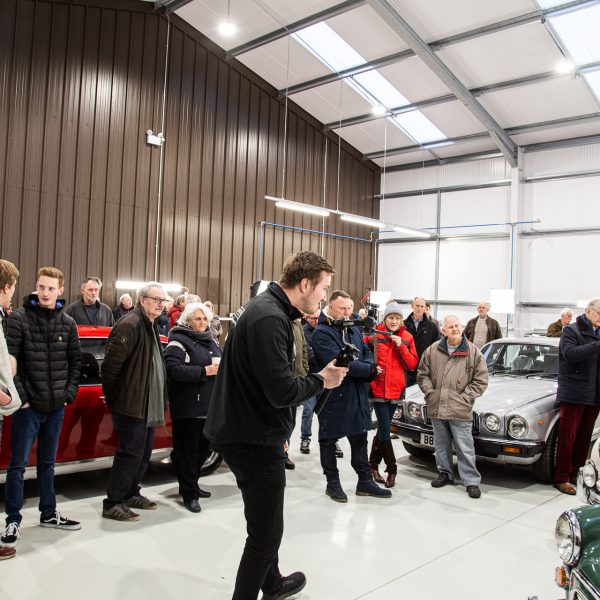
Last night, the 31st March 2022, the Bridge Classic Cars Competitions team welcomed our largest ever studio audience to find out who the lucky winners of the 1966 Jaguar Mk2 and 1970 Morris Minor 100 were.
We had put out an open invitation to attend this live draw, as we have done in the past, and the response was amazing. Lots of classics braved the unpredictable weather to make the journey to the Bridge Classic Cars Suffolk HQ to watch the draw and some to find out if they were going home in the same classic they turned up in!
With everyone in, we could begin the live stream to the Bridge Classic Cars Facebook page where the rest of our guests had virtually joined us.
Hayley and Freddie took everyone on a tour around the competition building where we store mostly our competition but also a few personal projects as well as certain customer restorations. Working their way around, giving all those watching a few clues as to what is coming up next with Bridge Classic Cars Competitions.
Then, it was time for the main event. Finding out who had been assigned the winning numbers. As always, the entry lists to each competition are published at 630pm the day of the draw before the live stream at 7pm sharp. The number is decided at random using a Google Random Number Generator.
To begin, we always do a test run to make sure that the generator is working correctly. Everything was working just as it should, so now it was time to spin the wheel and see who the lucky pair were.
First up was the 1970 Morris Minor 1000. Hayley input the criteria of numbers for the generator to choose between and with a click of a button and a flurry of numbers rushing past on the big screen, the new owner of the Morris Minor had been chosen. 1250 – the ticket allocated to Neil Brinson.
Next was the turn of the 1966 Jaguar MkII. Again, the ticket number was to be selected from one of the tickets published on the entry list. This competition had entirely sold out several hours before the draw, so after resetting the Random Number Generator it was time to find out who had won this classic Jaguar. Hayley input the numbers to be selected from and just like that, we found the Jaguar’s new owner. Ticket 3500 which belonged to Anthony Roberts.
Bridge Classic Cars are award winning Classic Car Restoration and Maintenance specialists. Your pride and joy is in safe hands with our expert Classic Car Technicians. Take a look at our awards here.
We use cookies to deliver the best possible experience whilst visiting our website. By clicking "Accept All", you consent to our use of cookies, or you can manage your preferences by clicking the link below. You can manage your preferences at any time from out Cookie Policy page.